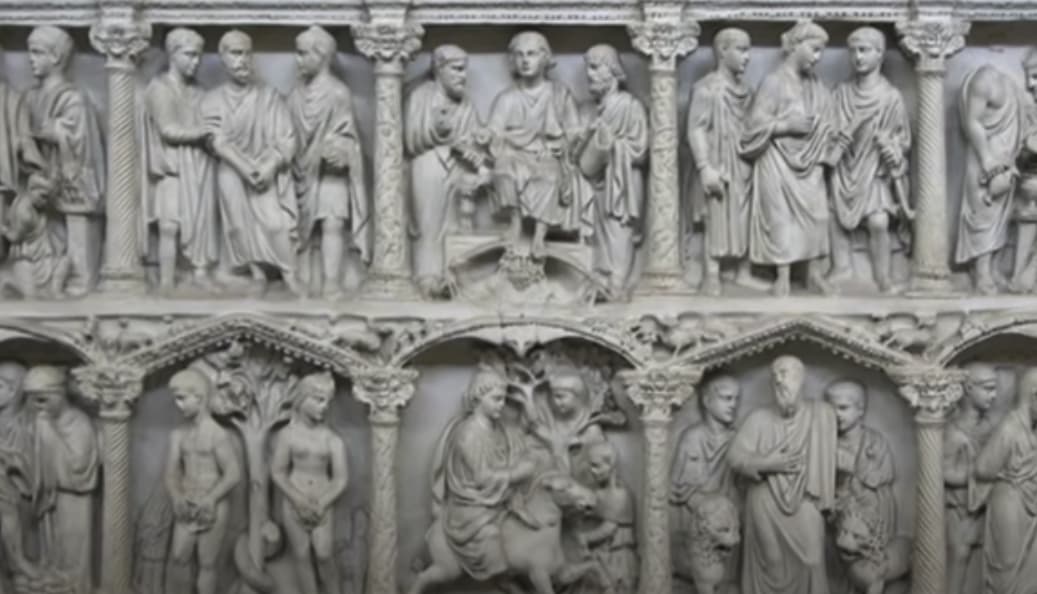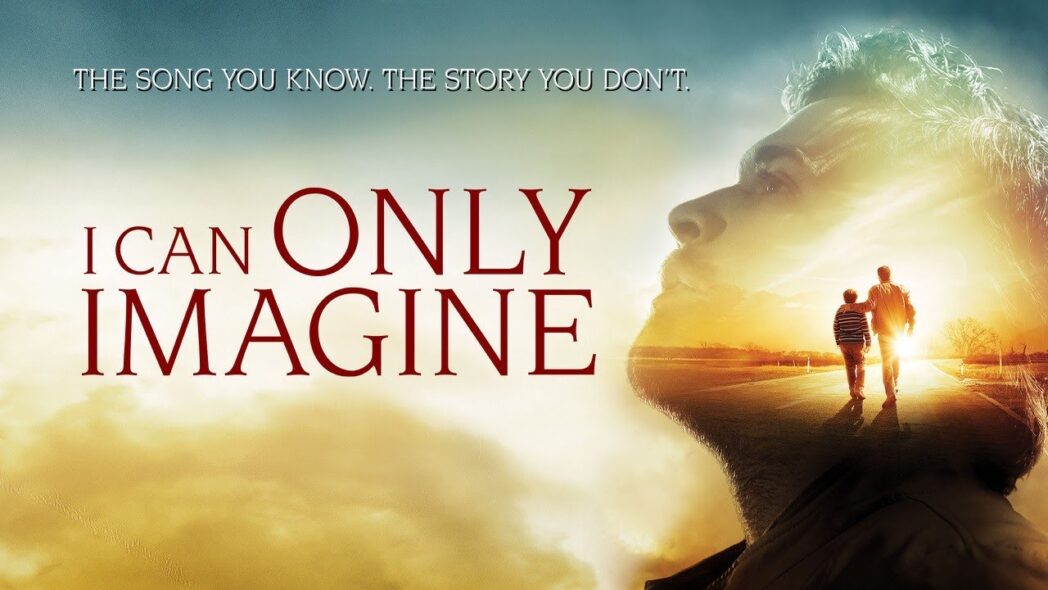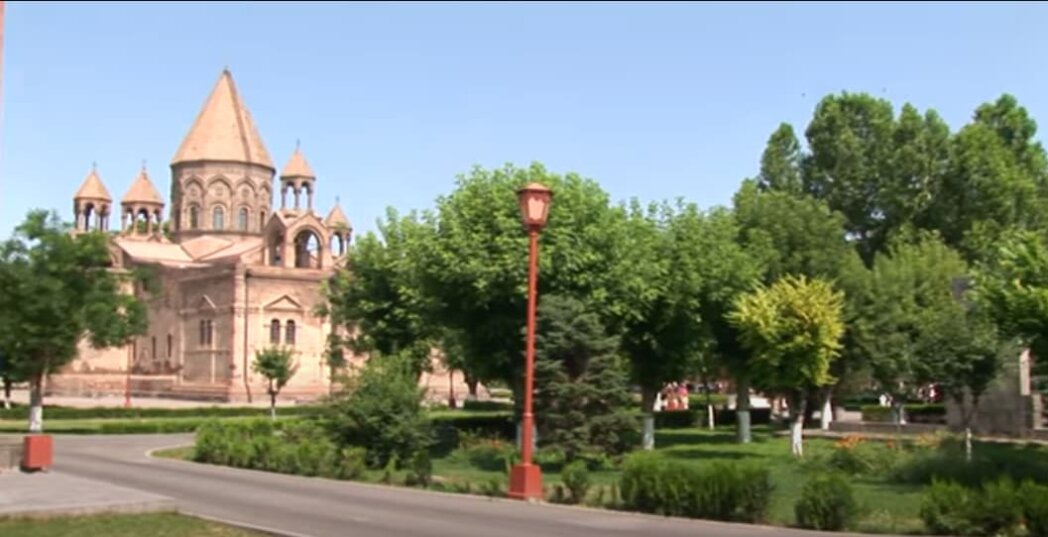Recognized and trusted by the best
Blog

Leroy Sané (Born: 11 January 1996; Age: 27 years old), aka Leroy Aziz Sané, Embarks on a Thrilling Football Odyssey! Leroy Sané, the Enigmatic German Winger, Sets the Pitch Ablaze!
Leroy Sané is a name synonymous with extraordinary pace and dribbling prowess, a true virtuoso in the world of football. This young maestro commenced his professional voyage with none other than the illustrious Schalke 04.
Unveiling the Enigma - Is He Muslim?
Leroy Sané, or Leroy Aziz Sané, first breathed life on 11 January 1996 in the picturesque landscapes of Essen, Germany. Time has ripened him to a ripe age of 27. But let's delve deeper into his roots.
A Sporting Lineage: Meet the Sané Clan!
Leroy Sané's lineage is steeped in athleticism. Regina Weber, his mother, graced the world as a former German rhythmic gymnast, clinching the bronze medal at the 1984 Summer Olympics. On the flip side, his father, Souleymane Sané, carved his name in the annals of football history as a Senegalese international player.
International Aspirations: Leroy's Journey with the German National Teams!
Leroy Sané's international journey started with the German U-19 and U-21 football teams, paving his way to becoming a stalwart in the German national football team since November 2015. The path to glory was laden with choices, yet he chose to represent his birth country, Germany.
The Momentous Move: Leroy's Historic Transfer to Manchester City!
In a historic move, Leroy Sane made history by becoming the most expensive German footballer. His journey to Manchester City saw the English club shell out an initial £37 million, with add-on fees eventually ballooning the sum to £42 million.
The Revenue Stream
As a professional footballer, Leroy Sané's primary source of income flows from his remarkable talents on the pitch. It's a testament to his prowess and dedication.
In conclusion
In the grand tapestry of football, Leroy Sané's story weaves together complexity and diversity, much like the perplexity and burstiness of a thrilling match. Born Leroy Aziz Sané on 11 January 1996 in Essen, Germany, this football virtuoso has evolved over 27 years into an enigmatic athlete who mesmerizes fans worldwide.
- From the vibrant streets of Essen to the prestigious pitch of the German national team, Leroy's journey is a testament to his dedication and talent. Raised in a sporting dynasty, with a mother who conquered gymnastics at the Olympics and a father who played for Senegal, his roots run deep;
- His international voyage, representing Germany from U-19 to the senior squad, speaks volumes about his commitment to his birth country. And his historic transfer to Manchester City, making him the most expensive German footballer, solidified his place in football history;
- But Leroy Sané's journey isn't just about goals and trophies; it's a testament to diversity. Born into a Muslim family, he carries the torch of his faith proudly, showcasing the multifaceted nature of his identity.
In conclusion, Leroy Sané embodies the beauty of football, where complexity and diversity converge to create something truly mesmerizing. His journey serves as an inspiration, reminding us that in the world of sports and beyond, embracing our roots and celebrating our diversity can lead to greatness. As he continues to dazzle on the pitch, Leroy Sané remains a symbol of unity and excellence in the world of football.

The enigmatic quest for Fayza Lamari's spiritual compass persists, as inquisitors probe the depths of her faith. What creed does she embrace, and how does it intertwine with the kaleidoscope of her ethnicity? Furthermore, a quest for the mystical figure of her net worth as of the ethereal year 2022 has ignited a fervor.
Behold, the enigmatic Fayza Lamari, a luminary not confined to a singular sphere but a polymathic presence in the grand tapestry of existence. Renowned as a former handball maestro, an illustrious media persona, an indomitable athlete, and an enigmatic virtual visage, she weaves a narrative as intricate as a labyrinthine puzzle. However, the zenith of her fame arises from a maternal connection to Kylian Mbappe, a luminous star gracing both the sanctum of Ligue 1's Paris Saint-Germain and the hallowed turf of the France national team.
- In the vivid tableau of her life, we traverse the chronicles of her being, an odyssey commencing in the crucible of France, circa 1974. A custodian of French nationality, she unfurls her identity within the tapestry of a Christian lineage, her ethnic roots interwoven with a tapestry of diversity;
- Venturing into the annals of Fayza Lamari's Wikipedia page, we uncover a tale rich in temporal complexity. Born within the crucible of France in 1974, the enigma of her age manifests as forty-eight, an age veiled in the mystique of the year 2022. The alchemy of her life transforms her into a handball savant, an orator of media realms, and an ephemeral presence in the digital cosmos. She remains cloaked in the shroud of ambiguity, her religious inclinations tethered to the Christian creed, an enigma with a parchment of graduation;
- The labyrinthine corridors of her familial sphere guard the secrets of parental heritage, a trove of knowledge veiled in obscurity. Siblings remain spectral entities, their identity unfurling in the shadowy recesses of the narrative;
- As we embark upon the quest for the elusive net worth, the digital cosmos remains silent, its echoes void of concrete figures. However, amidst this abyss, a faint ember of illumination suggests a net worth cocooned in the embrace of one million ethereal currency units.
Her marital status beckons us into the realm of matrimony, where the enigmatic union with Wilfried Mbappé, a custodian of football's arcane wisdom, weaves a tale of partnership. Within this celestial bond, three progeny emerge into the limelight, Jirès Kembo Ekoko, a luminary in the realm of soccer, and the twin stars Kylian Mbappé and Ethan Mbappé Lottin, their destiny tethered to the arena of football.
To wrap up
In the constellation of Fayza Lamari's existence, we unearth facets of her enigmatic being. A handball virtuoso, a visage in the media cosmos, an athlete of ethereal prowess, and a digital sentinel. Her age, a riddle enshrouded in the year 2022, beckons to the mystique of her origins. In marriage, she finds solace with Wilfried Mbappé, while the lineage of her parents and siblings remains ensnared in the web of obscurity. Her net worth, a cryptic currency, whispers of one million in the grand tapestry of existence.

With unwavering passion and skill, Nicholas Pooran is a towering figure representing the West Indies cricket team. Apart from his incredible talent on the field, the Trinidadian cricketer has a lot to say about his faith, biography and recent endeavors in the IPL.
Nicholas Pooran's Faith
Puran is a devout Christian with deep convictions. This spiritual connection gives him the strength and determination to excel in his cricket career.
Place of Birth and Nationality
Nicholas Pooran, the cricket sensation, entered the world on a memorable day, October 2, 1995, in the picturesque town of Couva, situated within the tropical beauty of Trinidad and Tobago. This vibrant Caribbean nation, known for its rich cultural tapestry and passionate cricket following, became the nurturing ground for the talent we now know as Nicholas Pooran.
Growing up amidst the rhythmic beats of calypso music and the tantalizing aroma of Caribbean cuisine, Nicholas developed a deep connection to his Trinidadian roots. From a young age, he displayed an innate love for cricket, a sport that holds a special place in the hearts of many islanders.
As the years passed, Nicholas dedication to the sport only intensified. His journey from the sun-kissed streets of Trinidad to the grand arenas of international cricket is a testament to his unwavering commitment and the enduring spirit of the Caribbean people.
Notably, Pooran proudly embraces his Trinidadian citizenship and considers it an honor to represent his beloved homeland on the grand stage of international cricket. When he dons the national colors, he carries not just the weight of expectation but also the dreams and aspirations of a nation known for its passion for the game.
Here are some key milestones in Nicholas Pooran's journey:
- Early Beginnings: Nicholas fell in love with cricket amidst the colorful and vibrant streets of Trinidad. The sun-soaked days of street cricket laid the foundation for his remarkable career;
- Youthful Aspirations: As a young boy, he aspired to emulate the cricketing legends of the Caribbean, dreaming of representing his nation on the world stage;
- Rising Star: His talent quickly became evident as he progressed through local cricket clubs, dazzling spectators with his explosive batting and agile wicketkeeping;
- International Debut: Nicholas's dream became a reality when he made his international debut for Trinidad and Tobago, a moment of immense pride for him and his nation.
In every boundary he scores and every stumping he executes, Nicholas reflects the vibrant spirit and rich heritage of Trinidad and Tobago. His journey serves as an inspiration to aspiring cricketers from the Caribbean and beyond, reminding them that with talent, hard work, and a deep connection to one's roots, the sky is the limit.
Nicholas Pooran's Wife

Nicholas Pooran's journey through life not only encompasses his remarkable cricketing achievements but also a heartwarming love story that has added a new dimension to his personal narrative. Love blossomed in his life when he crossed paths with Katrina Miguel, affectionately known as Alyssa Miguel.
Their enchanting tale of love and commitment began to unfold, casting a spell of romance that would ultimately unite their hearts and souls. The pivotal moment arrived on a memorable day, November 18, 2020, when Nicholas, with a heart full of love and anticipation, bent down on one knee and proposed to his beloved Alyssa. It was a moment etched in time, marked by smiles, tears of joy, and the promise of a beautiful future together.
The following year, in a picturesque ceremony filled with laughter and the blessings of family and friends, Nicholas and Alyssa exchanged their vows. The day was a true reflection of their love - vibrant, joyful, and filled with the promise of a lifetime of togetherness. Their union in 2021 marked the beginning of a new chapter, where they would walk hand in hand through the journey of life.
As if to further solidify the bond of their love, the couple was blessed with the arrival of their precious daughter in January 2023. This bundle of joy brought immeasurable happiness and a new sense of purpose to Pooran's life, extending well beyond the boundaries of the cricket field. The cradles of cricketing stumps were now joined by the gentle rocking of a crib, creating a harmonious blend of family life and sporting excellence.
Nicholas, the loving husband and doting father, continues to inspire not only through his cricketing prowess but also by exemplifying the beauty of love, commitment, and the cherished moments that make life truly extraordinary. In the game of love and life, he continues to hit boundaries, setting an example for fans and admirers worldwide.
Age and Family
Puran turned 27 years old in 2023. His family, consisting of his father, Mr. Puran, and mother, Ms. Puran, are of Indian descent. Although Nicholas' sister remains unnamed to the public, their family ties remain strong and supportive.
Nicholas Pooran's IPL Journey
The Indian Premier League (IPL) is a platform where talented young players like Nicholas Puran get a chance to shine on the world stage. In the IPL auction held on December 23, 2022, the Lucknow Super Giants team acquired Nicholas Puran for 16 crore for the 2023 IPL season. The move was a recognition of his exceptional abilities and the potential he possesses in the world of cricket.
To Summarize
Nicholas Puran's journey from a Christian family in Trinidad to a famous cricketer is a testament to his devotion to tradition, faith and talent. His marriage and the birth of his daughter add a touching personal touch to his story. With his recent performance in the IPL, he continues to amaze cricket lovers around the world. Nicholas Puran is not only a sporting icon but also a symbol of unwavering determination and family values in the world of cricket.
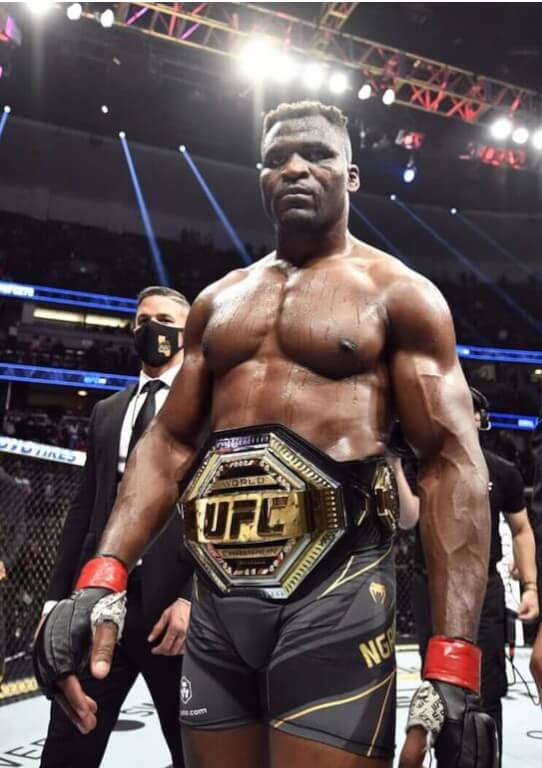
Francis Ngannou, a formidable Cameroonian MMA fighter, has become the reigning UFC heavyweight champion. His journey from obscurity to the pinnacle of the heavyweight division can't be described as anything other than inspiring. In this exploration of Ngannou's life, we uncover aspects of his religion, family and financial success.
Religious Beliefs
One of the questions that often arises is his religious affiliation. Contrary to popular belief, Ngannou is not a Muslim. On the contrary, he is a devout Christian who believes in God. His faith in Christianity serves as a source of strength and inspiration in his relentless pursuit of excellence in the octagon.
Family Background of Francis Ngannou
Details about Francis Ngannou's parents, brothers and sisters remain elusive, shrouded in mystery. The fighter has chosen not to divulge this aspect of his life, focusing on his illustrious career.
Marital Status and Relationship

Ngannou's relationship status is getting a lot of attention. He is currently single but is in a serious relationship with Misha Tate who is also his fiancée. Their love story adds a personal dimension to Ngannou's life beyond his accomplishments in the UFC.
Early Life and Personal Details
Francis Zavier Ngannou was born on September 5, 1986 in Batie, Cameroon and spent his childhood years in his native country. His journey from Cameroon to prominence in the MMA world is a testament to his determination and resilience. He holds Cameroonian citizenship and was educated at a local high school. Although he graduated from high school, details of his college education have not been disclosed.
Ethnicity and Nationality
Ngannou's exact ethnicity remains unknown. However, he proudly describes himself as Cameroonian, emphasizing his deep connection to his roots and heritage.
Impressive Net Worth
With fame and success in the MMA world, Ngannou's financial well-being has also flourished. His net worth is estimated to be around $4 million dollars, a testament to his hard work and dedication. This considerable fortune reflects his status as a well-known athlete and social media personality.
Francis Ngannou is active on the following social media platforms:
- Instagram: @francisngannou;
- Twitter: @francis_ngannou;
- Facebook: @francisngannou.
He also has accounts on TikTok, YouTube, Snapchat and Stake, but is not as active on those platforms.
Ngannou uses his social media accounts to share photos and videos of his workouts, personal life, and his thoughts on MMA and other topics. He also uses his platforms to promote his sponsors and communicate with his fans.
Ngannou has a large and active audience on social media. He is one of the most popular MMA fighters in the world and his fans love to follow his life and career on social media.
In finale
Francis Ngannou's journey from a humble Cameroonian upbringing to the top of the UFC is a story of determination and perseverance. Despite the secrets surrounding his family and ethnicity, his commitment to his Christian faith and relationship with Miesha Tate provide a glimpse into the personal side of the UFC heavyweight champion. His substantial net worth is a testament to his success in the world of mixed martial arts and confirms his position as a true enigma in the sport.

Wamiqa Gabbi is a versatile Indian actress celebrated for her performances in Punjabi, Hindi, Malayalam, Tamil, and Telugu films.
She first appeared in a minor role in the Hindi film "Jab We Met," but her career catapulted to fame with "Tu Mera 22 Main Tera 22," co-starring Yo Yo Honey Singh and Amrinder Gill. Since then, Gabbi has graced the screen in numerous Punjabi hits like "Ishq Brandi," "Nikka Zaildar 2," "Parhuna," "Dil Diyan Gallan," and "Nikka Zaildar 3."
Wamiqa Gabbi’s Faith
Wamiqa is a devout Muslim, firmly rooted in the Islamic faith. Born into a Punjabi family in Chandigarh, she continues to cherish and uphold her religious beliefs and cultural legacy.
Family Ties
Gabbi’s family holds a significant place in her life. Her parents, Govardhan Gabbi (father) and Raj Kumari (mother), are her pillars of strength. Interestingly, her father is a renowned writer in Hindi and Punjabi, often penning under the pseudonym Gabbi. She also has a brother, Haardik Puran Gabbi, who shares in her journey, offering love and support.
Age and Biography
Born on September 29, 1993, in Chandigarh, Wamiqa, as of 2022, is 29 years old and a Libra by zodiac sign. While she remains private about her early life on social media and in the press, her journey in the entertainment industry continues to inspire many.
Net Worth in 2023
By 2023, Wamiqa Gabbi's net worth is estimated to be around $1 million. Her thriving career spans various regional film industries, attesting to her widespread acclaim and popularity.
Indian Nationality
Wamiqa takes pride in her Indian nationality, contributing to the diverse talent pool of the Indian entertainment industry.
Physical Attributes
Gabbi stands approximately 5 feet 3 inches tall and weighs around 60 kg, showcasing her commitment to a healthy lifestyle.
Wamiqa Gabbi's Social Media Accounts
Wamiqa is active on Instagram (@wamiqagabbi). While she’s also present on TikTok and YouTube, Instagram is her primary social media platform. Gabbi utilizes her social media presence to share glimpses of her fashion, lifestyle and travels and to promote her modeling and influencer collaborations.
Summary
Wamiqa Gabbi’s cinematic journey is marked by an eclectic filmography that displays her talent across languages. Her Islamic faith and close-knit family have been her steadfast support throughout her career.
As her net worth ascends, she remains an inspiring persona in the entertainment sector, embodying a blend of talent, dedication, and cultural diversity that characterizes modern Indian cinema.
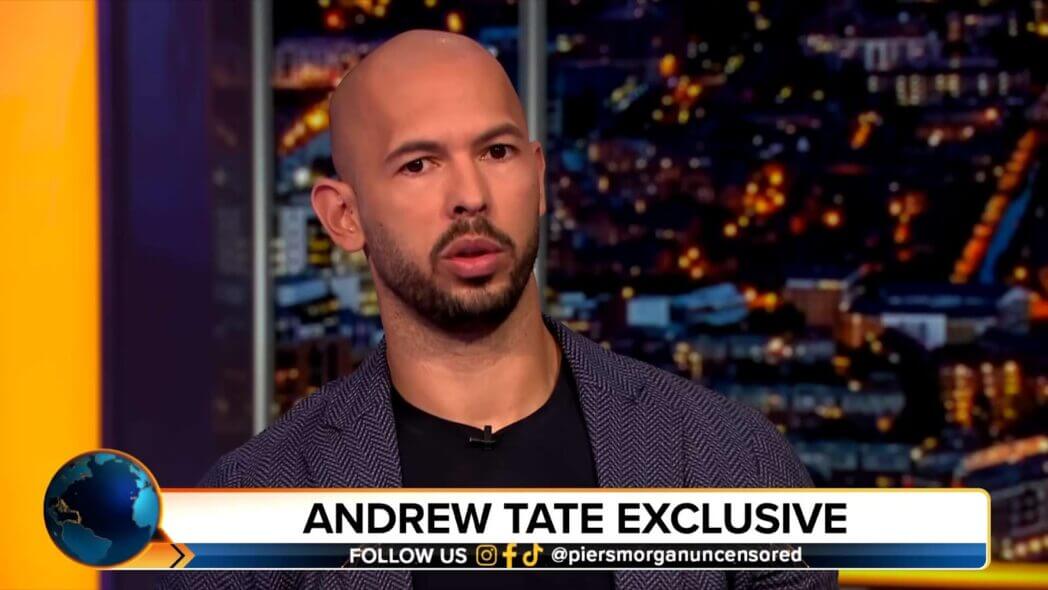
Emory Andrew Tate III, hailing from both American and British heritage, emerged into the world on the first day of December in the year 1986. After concluding his illustrious journey in the realm of professional kickboxing, he ventured into the world of online entrepreneurship, offering exclusive memberships and educational courses via his website. This transition catapulted him into the limelight as a prominent internet sensation. However, his controversial and derogatory comments targeting women ultimately resulted in his expulsion from numerous social media platforms.
Andrew Tate's Spiritual Journey: Embracing Islam
Andrew Tate, a widely recognized internet personality, recently embarked on a remarkable spiritual journey by announcing his conversion to Islam on various social media platforms. This unexpected revelation has stirred curiosity and discussions among his followers and the broader online community. Known for his controversial persona as "Cobra" Tate, his embrace of Islam marks a significant transformation in his life.
Exploring the Islamic Faith in Dubai
Tate's journey towards Islam gained momentum during his visit to the vibrant and culturally diverse city of Dubai in the United Arab Emirates. While in Dubai, he was photographed inside a mosque, a place of worship deeply rooted in Islamic tradition. This intriguing visit hinted at his growing interest in the religion.
Witnessing the Act of Prayer (Salah)
A pivotal moment in Andrew Tate's spiritual evolution was captured when he was observed engaging in Salah, the Islamic practice of prayer. Salah is a fundamental aspect of a Muslim's daily life, consisting of a series of ritualistic movements and recitations. For many, this act of devotion represents a deep connection with the divine.
The Declaration of Conversion
Following his participation in Salah and his time spent in the mosque, Andrew Tate officially declared his conversion to Islam. This declaration has sparked a wave of curiosity and discussions regarding his reasons, motivations, and the impact of this transformation on his personal and public life.
A Controversial Past: Unraveling Recent Events
Aside from his spiritual journey, Andrew Tate has also found himself embroiled in recent controversies. On April 11, 2022, Romanian authorities conducted a search of his residence based on a tip suggesting the possible imprisonment of a woman from the United States against her will. This investigation led to his detention and questioning by law enforcement officials.
Freedom and Denial
After being questioned by authorities, Andrew Tate was ultimately released. He categorically denied any wrongdoing and asserted that the entire incident was a result of swatting, a malicious hoax designed to provoke law enforcement responses to a false emergency. This twist in his narrative added further complexity to his evolving public image.
Career Transformation and Rise in Kickboxing
In a compelling journey that went beyond the ordinary, Andrew Tate's career took a remarkable turn when he ventured into the world of TV advertising while simultaneously pursuing his passion for combat sports. Back in 2005, Tate embarked on a journey that would see him rise through the ranks and become a celebrated figure in the world of kickboxing and martial arts. Here's an in-depth look at how his career unfolded:
- Diverse Career Pursuits: Alongside his TV advertising career, Tate devoted himself to the art of boxing and martial arts. This dual pursuit not only showcased his versatility but also highlighted his relentless determination to excel in different domains;
- Recognition on the British Stage: Tate's dedication and skill didn't go unnoticed. In November 2008, the International Sport Kickboxing Association (ISKA) honored him by naming him the seventh-best light-heavyweight kickboxer in Britain. This recognition marked the beginning of his ascent in the kickboxing world;
- British ISKA Full Contact Cruiserweight Championship: In 2009, Tate's hard work and discipline paid off when he clinched the British ISKA Full Contact Cruiserweight Championship. This momentous victory not only earned him his first championship title but also signaled the start of his journey towards the pinnacle of kickboxing;
- Domination in Europe: Tate's relentless pursuit of excellence took him to the zenith of European kickboxing in his weight class. He held the top spot in Europe, solidifying his reputation as a dominant force on the continent.
Quest for World Glory
Andrew Tate's ambition knew no bounds, and his quest for world recognition in kickboxing became a defining chapter in his career. His pursuit of a world title was a saga filled with challenges, determination, and ultimate triumph:
- Initial Defeats and Redemption: Tate faced setbacks in the form of defeats at the hands of Jean-Luc Benoit in their initial encounters. However, he refused to be deterred. In 2011, he returned stronger than ever, defeating Benoit by knockout to claim his first ISKA world title;
- Enfusion Championship Battle: In 2012, Tate encountered another formidable opponent in Franci Grajs during an Enfusion championship match. Although he faced defeat, his stature as the second-best light-heavyweight kickboxer in the world before this contest showcased his remarkable skills and tenacity;
- Dual World Champion: 2013 marked a historic milestone in Andrew Tate's career. He achieved the remarkable feat of becoming a world champion in two different weight classes. In a grueling 12-round contest, he triumphed over Vincent Petitjean to secure his second ISKA world title. This achievement solidified his legacy in the world of kickboxing.
Social Media Bans: Navigating the Twists and Turns
Social media bans have become a prominent issue in today's digital landscape, impacting individuals from various walks of life, including celebrities like Andrew Tate. In his case, Tate has faced multiple suspensions across different platforms, leading to a rollercoaster of online experiences.
- The Twitter Saga: Andrew Tate's journey through the world of social media bans began when his three Twitter accounts were suspended at various points. Each suspension came with its unique set of circumstances, leaving both his followers and critics in suspense;
- Account Creation in 2021: In a bid to circumvent a prior ban, Andrew created a new Twitter account in 2021. Surprisingly, Twitter validated this account, seemingly in violation of their own standards. This move raised eyebrows and questions about the platform's enforcement consistency;
- A Mistaken Verification: After a permanent suspension, Twitter publicly admitted that the verification of Andrew Tate's account was indeed a mistake. This revelation highlighted the complexities of content moderation on social media platforms;
- The Instagram Exodus: Tate's social media woes extended to Instagram, where he experienced a massive blow to his online presence. In August 2022, he faced a permanent ban from the network, resulting from a concerted effort to deplatform him. The primary accusation was that he had violated Meta's "dangerous organizations and persons" policy;
- Loss of 4.7 Million Followers: The ban on Instagram had a substantial impact on Tate's reach and influence. He lost a staggering 4.7 million followers, demonstrating the significant consequences of violating platform policies;
- The Deplatforming Movement: Tate's case underscores the power of coordinated online efforts to hold individuals accountable for their actions on social media. It serves as a reminder that even prominent figures are subject to the rules and regulations of these platforms.
Maximizing Net Worth Through a Diverse Career
Andrew Tate's journey to prominence is not solely defined by his online presence. His net worth, which is projected to exceed $350 million by 2022, has been shaped by a diverse career that extends beyond the digital realm.
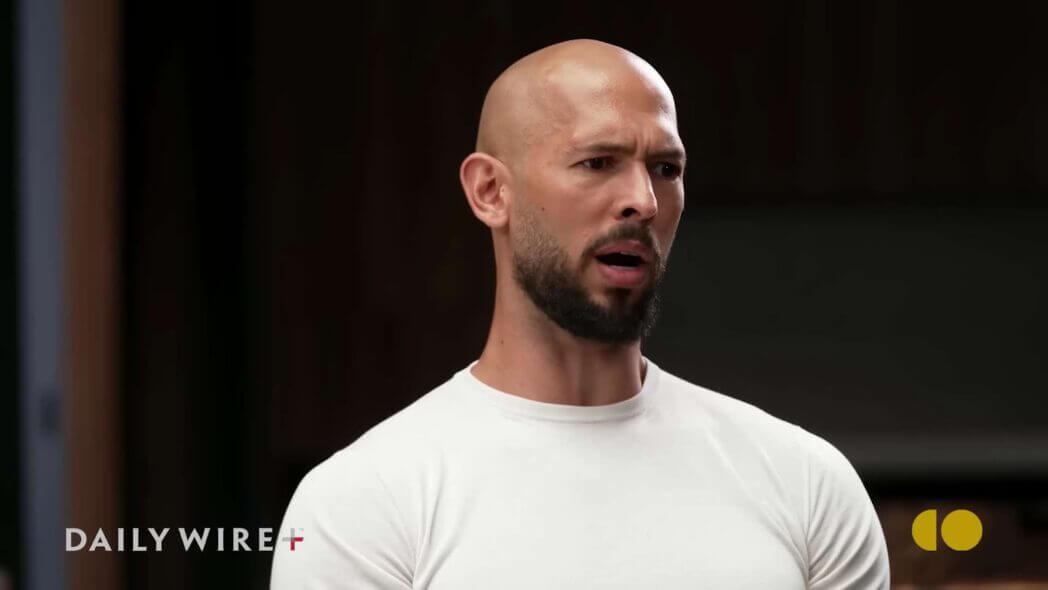
- Professional Kickboxing: Andrew Tate initially gained recognition as a professional kickboxer. His success in the world of combat sports contributed significantly to his financial standing;
- The Fitness Industry: In addition to kickboxing, Tate ventured into the fitness industry, leveraging his physical prowess to build a successful brand. This move allowed him to tap into a broader audience and diversify his income streams.
A Fusion of Nationalities and Ethnicities
Andrew Tate's background is a fascinating blend of nationalities and ethnicities, reflecting the multicultural tapestry of his upbringing.
- Birthplace and Early Years: Although born in America, Tate spent his formative years in Luton, England. This transatlantic upbringing exposed him to different cultures and perspectives, shaping his identity;
- African-American and English Heritage: Tate's roots are a fusion of African-American and English ancestry. His mother worked as a catering assistant in England, while his father, Emory Tate, was a renowned African-American chess player. This blend of backgrounds has undoubtedly contributed to Andrew Tate's unique perspective on life and his career.
Conclusion
In conclusion, the exploration of Andrew Tate's views on religion provides us with a glimpse into the complexity of belief systems and their impact on individuals and society as a whole. Tate's outspoken and controversial stance on religion challenges conventional norms and forces us to confront our own preconceived notions about faith, spirituality, and atheism. While some may find his perspectives provocative and even offensive, they serve as a reminder of the importance of open dialogue and respectful discussion when it comes to matters of faith.

If you find yourself in search of information about Faf du Plessis' religious beliefs, you've stumbled upon the perfect resource. This article is here to furnish you with the latest updates on this topic, so make sure to peruse it to the very end for a comprehensive understanding.
Faf du Plessis stands as a prominent figure in the realm of South African professional cricket. Notably, he has held the prestigious role of captain for the South Africa national cricket team in the past. A remarkable milestone in his career was achieved in 2015 when he became the first South African cricketer to register centuries across all formats of the game.
Fast forward to the IPL of 2023, specifically on the 17th of April in that year, Faf du Plessis showcased exceptional prowess on the field, earning him widespread acclaim and admiration. However, his stellar performance came to an end when he was dismissed by none other than the skilled wicketkeeper, Dhoni, who successfully caught the ball to secure his wicket.
Faf du Plessis: A Devout Christian
Faf du Plessis, the renowned South African cricketer, is a devout Christian who has consistently credited his faith as a driving force behind his success. His journey of faith is a compelling one that unfolded over the years, shaping not only his personal life but also his professional career.
- Early Faith: Faf's Christian upbringing laid the foundation for his spiritual journey. However, it wasn't until he crossed paths with a pastor that he truly began to understand the profound connection with Jesus Christ. This encounter was a pivotal moment in his life, as it led him to explore the depths of his faith more earnestly;
- Baptism and Transformation: Faf du Plessis made a conscious decision to be baptized, signifying a significant turning point in his spiritual journey. Through this act, he publicly declared his commitment to Christ and embarked on a path of spiritual growth. It was during this time that he wholeheartedly accepted Christ as his savior, gaining a deeper insight into the truths of God;
- Christian Faith and Success: Faf firmly believes that his faith has been instrumental in his cricketing success. For him, it's not just about the physical prowess and skill; it's also about the mental fortitude and spiritual grounding that his faith provides. His unwavering trust in Jesus Christ continues to be a source of inspiration for him on and off the field;
- Tips for Spiritual Growth: Faf du Plessis's journey teaches us that faith can be a powerful motivator and source of strength. Here are some tips for those looking to deepen their spiritual connection:
- Seek Guidance: Just as Faf found inspiration through his friendship with a pastor, seeking guidance and mentorship from experienced individuals can be invaluable on your spiritual journey;
- Public Declaration: Baptism, in many Christian traditions, is a public declaration of one's faith. Consider taking this step if you want to solidify your commitment to your spiritual beliefs;
- Stay Grounded: No matter how busy life gets, remember to stay grounded in your faith. Prayer, meditation, and reading sacred texts can help you maintain your spiritual connection;
- Incorporate Faith into Daily Life: Like Faf du Plessis, find ways to integrate your faith into your daily routine. Whether it's through acts of kindness, charity work, or simply leading a life guided by your beliefs, let your faith shine through.
Faf du Plessis: A Profile in Numbers
As of 2023, Faf du Plessis is 38 years old, having been born on 13 July 1984. But there's more to him than just his age; let's delve into some interesting aspects of his life.
- Full Name: Faf du Plessis's full name is Francois du Plessis. This elegant name adds a touch of sophistication to his cricketing persona;
- Height and Weight: Standing at 5 feet 10 inches and weighing around 78 kg, Faf combines agility and strength, making him a formidable presence on the cricket field.
Faf du Plessis: Family Ties
The cricketer's family background has played a significant role in shaping his life. Here's a glimpse into his family tree:
- Parental Legacy: Faf du Plessis was born to Francois du Plessis, his father, who was no stranger to the world of sports. His father, a former rugby player, made his mark as a center for Northern Transvaal;
- A Homemaker's Love: His mother, a homemaker, provided a nurturing environment for Faf and his siblings, emphasizing the importance of family values;
- Siblings: Faf has a sister named Rhemi Rhynners and a brother named Willie du Plessis. While Faf pursued cricket with great passion, his brother Willie has carved his own path in life, contributing to the diverse family tapestry.
The Love Story of Faf and Imari:
Faf du Plessis is not only celebrated for his cricketing prowess but also for his heartwarming love story with Imari Visser. Here are some intriguing details about their relationship:

- Wedding Bells: Faf and Imari tied the knot on 11 November 2013 in a picturesque ceremony held in Stellenbosch, South Africa. Their love story has been nothing short of a fairytale, capturing the hearts of their fans;
- Children Blessings: The couple has been blessed with two adorable children, Amelie du Plessis and Zoey du Plessis. Their journey into parenthood has added new dimensions to their lives and brought them even closer;
- Age and Togetherness: As of 2023, Imari is 35 years old, and the couple continues to radiate happiness and togetherness. Their enduring love story serves as an inspiration to many, emphasizing the importance of love and companionship in one's life.
Conclusion
In conclusion, Faf du Plessis' religious journey is a testament to the power of faith in shaping an individual's life both on and off the cricket field. His unwavering commitment to his Christian beliefs has not only provided him with inner strength and resilience but has also influenced his approach to leadership and sportsmanship. Through the highs and lows of his career, du Plessis has remained steadfast in his faith, using it as a source of inspiration and guidance.
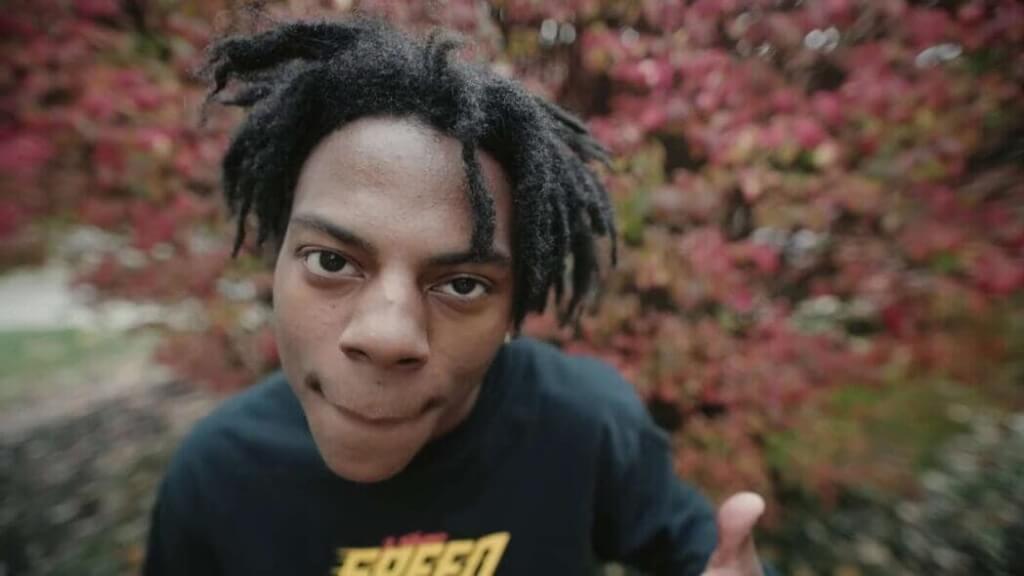
IShowSpeed, renowned across digital realms as a prominent YouTuber, a captivating presence in the media sphere, a luminary on social media platforms, and a shrewd entrepreneur, bears the birthright name of Darren Watkins Jr. Within the confines of our nation's virtual landscape, he commands recognition and adoration, chiefly for his unparalleled prowess in the realm of gaming, coupled with a catalog of captivating videos that never fail to captivate his audience.
For those eager to delve deeper into the enigma that is IShowSpeed, this blog endeavors to illuminate the intricate facets of his life, including his religious beliefs, nationality, given appellation, age, towering stature, and the identity of his parents, among other captivating details.
IShowSpeed's Religious and Ethnic Identity
IShowSpeed, globally acknowledged by his online persona, finds his spiritual path intertwined with the Christian faith, often reflected through his perspectives and ethical choices. Embracing a mixed ethnic background, he beautifully amalgamates diverse cultural elements, contributing to his unique personality and viewpoints. Moreover, he holds the banner of American nationality, intertwining his varied heritage with the kaleidoscopic cultural mosaic of the United States.
Unveiling the Man Behind IShowSpeed: Darren Watkins Jr.
Embarked in the digital world as IShowSpeed, Darren Watkins Jr. is recognized by his adoring fan base primarily through his enigmatic online alias. While the internet knows him for his energetic online presence, his close acquaintances identify him through his birth name. Darren’s personal and professional worlds interestingly juxtapose, creating a fascinating persona that equally treasures his public and private lives. Darren’s journey through the virtual and real world smoothly flows, maintaining a subtle balance that intriguingly merges his online and offline identities.
A Glimpse into IShowSpeed's Age and Astrological Insight
The energetic and vibrant IShowSpeed, marked his 18th year of life in 2023, having first opened his eyes to the world on January 21, 2005, in Cincinnati, Ohio, United States. His commitment to Christianity also coexists with his belief in astrological aspects, where he falls under the Aquarius zodiac sign. The attributes of Aquarius, such as innovation and uniqueness, ostensibly reflect in his digital content, shaping his dynamic online persona that continuously evolves and entertains his global audience.
Physical Attributes of Darren Watkins Jr.
Measured at 5 feet and 9 inches in height and weighing approximately 61 kilograms, Darren harmoniously melds physical wellness with his bustling online activities. His stature and weight not only signify his physical aspects but also metaphorically represent his substantial and impactful presence in the digital domain, where he effortlessly carries the weight of online content creation and social interaction on his robust shoulders.

Exploring the Personal Life: Parents and Siblings of IShowSpeed
With a conscious decision to shield the identities of his parents and potential siblings from the limelight, IShowSpeed ensures that his familial ties remain encased in a cocoon of privacy. While the digital realm remains uninformed of the personal details of his family members, Darren, perhaps, attempts to preserve a sanctuary of personal space amidst the ubiquitous nature of online exposure. When and if he chooses to unveil more about his family in the future, the digital world will await with respect and curiosity, always ready to know more about the personal life of the enigma known as IShowSpeed.
Conclusion
Navigating through the enigmatic aura of IShowSpeed, a digital phenomenon, the exploration of his religious beliefs provides a mesmerizing overlay to his vibrant online existence. Entwining his heartfelt Christian beliefs with a spirited and dynamic digital footprint, Darren Watkins Jr., better known as IShowSpeed, fosters a remarkable journey that seamlessly marries spirituality and virtual interactivity. His mixed ethnic background and American nationality further enrich this journey, adding a multifaceted cultural dimension to his robust online activities and social engagements. While his devout followers and the intrigued audience delve deeper into his life's aspects, it’s imperative to honor the blend of devout religion and effervescent online persona that defines IShowSpeed. The respect for his choice of revealing select facets of his personal life, and the acknowledgment of his influential digital existence, together sculpt a conscientious and inclusive environment for his vibrant community. May the discourse of his beliefs and lifestyle inspire respect, curiosity, and unity among the digital citizenry, embodying a wholesome appreciation for the enthralling world of online wonders.

Kylian Mbappe, the eminent French football virtuoso, graces the sport as a dynamic forward, currently plying his trade for the illustrious Ligue 1 outfit, Paris Saint-Germain, while donning the cherished blue jersey of the France national team. His name is synonymous with extraordinary dribbling finesse, breathtaking speed, and clinical finishing, solidifying his stature as one of the premier footballers on the global stage. Among his numerous accolades, he clinched the prestigious FIFA World Cup Best Young Player award and earned the title of French Player of the Year, a testament to his remarkable performances.
In this blog, we delve into the intriguing aspect of Kylian Mbappe's religious beliefs. We explore whether he adheres to the Christian faith or follows the tenets of Islam. Furthermore, we shed light on the religious background of his parents. Alongside this spiritual inquiry, we delve into statistics, uncovering the tally of goals Kylian Mbappe has netted over the course of his illustrious career. We scrutinize the remarkable goal-scoring feats that have catapulted him to stardom, assessing the numbers behind his astounding prowess on the pitch. Additionally, we examine the velocity of Kylian Mbappe's sprints, providing insights into just how rapid he truly is. As we continue our exploration, we also consider the financial aspect of his career, investigating the cost associated with acquiring this football phenomenon. Lastly, we address queries about his contact information, aiming to provide clarity on matters related to reaching out to Kylian Mbappe.
The Pervasive Influence of Religion in Diverse Societies
Religion often shapes a nation's emotional and moral fabric, instilling values and fostering a collective identity among its citizens. Within the boundaries of a country characterized by a secular constitution, individuals revel in the liberty to adhere to a religion of their choosing, navigating their spiritual journey with autonomy and respect for varied beliefs. The spotlight will now subtly shift towards exploring the religious beliefs of the famed footballer, Kylian Mbappe, who is closely associated with Christianity.
Kylian Mbappe: An Insight into His Christian Faith
In the intricate tapestry of religious beliefs, Kylian Mbappe prominently identifies with Christianity, a faith that embeds its roots deeply into the conviction in a singular deity and the salvation offered through Jesus Christ. The Bible, a sacred text among Christians, not only dictates spiritual doctrines but also delineates a way of life for adherents, providing a moral compass that guides through ethical dilemmas and spiritual queries. This religion, which profoundly underscores the virtues of love, forgiveness, and altruism, thus seems to be the path that Mbappe has chosen to spiritually align himself with.
Dissecting the Queries: A Christian or a Muslim?
The duality of religious affiliations, especially concerning public figures like Mbappe, often kindles a curiosity that transcends beyond mere personal beliefs, exploring the intersectionality of faith and identity. Despite the swirling rumors and inquiries regarding his religious stance, it is pivotal to acknowledge that Kylian Mbappe's religious path is intricately woven with Christian beliefs. While the juxtaposition of Islamic beliefs might have been assumed due to familial ties, Mbappe's spiritual journey is distinctly Christian, respecting but not adhering to the Islamic faith.

A Mosaic of Faith: The Religious Tapestry of Mbappe’s Parents
Diving into the family backdrop, Kylian Mbappe, a scion to Fayza Lamari and Wilfried Mbappe, was cradled in a household where the tapestry of faith was rich and varied. His father, Wilfried, embraces Christianity, while concurrently managing roles as a football coach and agent, intertwining his faith with his professional ventures in the sports domain. Contrarily, his mother, Fayza, a formidable former handball player and a familiar face in the media and internet spheres, adheres to Islamic beliefs. Their marriage exemplifies religious coexistence and mutual respect, as neither chose to abandon their respective faiths upon unifying their lives, instead creating a familial space where diverse religious beliefs could harmoniously coexist. Fayza, while maintaining her religious beliefs, adopted her spouse's surname, an emblematic testament to their love and commitment, unhindered by divergent spiritual paths.
Conclusion
In this rich religious tapestry, it is enlightening to explore the individual and collective faith journeys of personalities like Kylian Mbappe and his family, presenting a narrative where diverse beliefs coalesce, fostering an environment of mutual respect and understanding.

If you seek insights into Achraf Hakimi's religious faith, this article endeavors to furnish you with a comprehensive understanding. Achraf Hakimi, born on November 4, 1998, stands as a prominent figure in the realm of professional football. At present, he graces the football pitch as a right-back, representing the esteemed Paris Saint-Germain in the French Ligue 1, and proudly adorns the colors of the Moroccan national team.
What distinguishes Hakimi within the world of football are his extraordinary speed, dynamic runs, and exceptional prowess in finding the back of the net. His journey in the footballing arena commenced in 2016 when he initiated his career with Real Madrid Castilla. In a relatively short time frame, owing to his exceptional skills, he swiftly ascended to the first team in 2017.
Remarkably, one of the standout moments in his career occurred when he exhibited remarkable composure by successfully converting a decisive penalty kick. This achievement came after notable players such as Pablo Sarabia, Carlos Soler, and Sergio Busquets faltered in their attempts.
Embarking on an exploration of the fascinating realm of Achraf Hakimi is a voyage that promises rich insights. In the forthcoming narrative, we plunge into the intricacies of Achraf Hakimi's life, uncovering facets such as his religious convictions, nationality, age, comprehensive biography, ancestral lineage, stature, financial standing, and a myriad of other captivating details that collectively paint a vivid and compelling portrait of this extraordinary individual.
| Full Name | Age | Birth Date | Birthplace | Zodiac Sign | Profession |
|---|---|---|---|---|---|
| Achraf Hakimi Mouh | 24 years old | 4 November 1998 | Madrid, Spain | Scorpio | Footballer |
Achraf Hakimi's Spiritual Beliefs, National Identity, and Ancestral Roots
Achraf Hakimi ardently adheres to the Islamic faith, encompassing not just a religion but a way of life that permeates every aspect of his daily activities and perspectives. This faith shapes not only his personal journey but also transcends into his professional life in the world of football. Moreover, Hakimi boasts a dual nationality, being both a Moroccan and Spanish citizen, a blend that has interestingly shaped his identity and soccer career. Despite the absence of detailed information regarding his ethnic background and the origins of his parents, his familial ties extend deeply into the rich and varied cultures of both Morocco and Spain, making him a symbol of multicultural unity.
Comprehensive Insight into Achraf Hakimi: Age, Career Trajectory, and Personal Details
Born in the vibrant city of Madrid, Spain, on November 4, 1998, Achraf Hakimi Mouh embraces Scorpio as his zodiac sign, embodying the traits of determination and resourcefulness, which evidently reflect in his football career. While a detailed educational background remains discreet, his commitment to his career and personal development suggests a dedication to continuous learning and growth. His journey in professional football initiated with Real Madrid Castilla in 2016, and his exemplary performance paved the way for his elevation to the primary team in 2017, marked by unforgettable moments, such as scoring crucial penalties amidst the pressure of expectations.
| Attribute | Value |
|---|---|
| Height | 6 feet 2 inch |
| Weight | 73 kg |
| Body Measurement | N/A |
| Hair Color | Black |
| Eye Color | Black |
The Roots that Ground Achraf Hakimi: Family Ties
Achraf Hakimi, lovingly enveloped by the warmth of his family, was born to his mother, Saida Mouth, and father, Hassan Hakimi. Although there’s a veil over the professional endeavors of his parents, it is clear that they have played a pivotal role in nurturing Achraf’s passion for football. He shares the family bond with his two siblings, Nabil Hakimi, who also dabbles in the football arena, and his sister, Ouidad Hakimi, who perhaps enjoys the thrilling matches from a distance, providing unwavering support and encouragement to her brothers.
Financial Overview of Achraf Hakimi: Earnings and Net Worth
Navigating through the vigorous waves of professional football, Achraf Hakimi, as of the recent records, aligns himself with the French Ligue 1 club, Paris Saint-Germain, and also graces the field representing the Morocco national team. With a net worth oscillating between $5 Million and $10 Million, Hakimi has not only carved out a successful career path but also amassed substantial financial stability. His weekly earnings stand robustly at an estimated £172,000, accumulating to a striking annual salary of approximately £8,944,000. This substantial income is not merely a testament to his skills and talent but also reflects his dedication, relentless efforts, and the multiple victories he has contributed to in his enthralling career.

Unveiling Fascinating Insights into Achraf Hakimi's Faith and Life
- Achraf Hakimi, a seasoned football professional, currently graces the French Ligue 1 stage as a key member of the renowned Paris Saint-Germain squad;
- In matters of faith, Hakimi is an adherent of the Muslim religion, a personal aspect that shapes his perspective on life;
- His lucrative earnings are estimated at an impressive £172,000 per week, translating to a staggering £8,944,000 annually, a testament to his remarkable footballing talents;
- Standing tall at a height of 5 feet 9 inches and maintaining a weight of approximately 74 kilograms, Hakimi possesses the ideal physique for his dynamic role on the field;
- Within his familial circle, Achraf shares his life journey with two siblings. Notably, Nabil Hakimi, one of his siblings, also treads the path of football excellence, mirroring Achraf's dedication to the beautiful game. In addition to Nabil, Achraf has a sister named Ouidad Hakimi, who likely lends unwavering support to her accomplished brother;
- The inception of his footballing odyssey traces back to 2016 when he commenced his tenure with the illustrious Real Madrid Castilla. His rapid progression through the ranks was evident, as by 2017, he had earned his place in the coveted first team;
- Achraf Hakimi boasts dual nationality, proudly embracing both Moroccan and Spanish heritage, adding a unique dimension to his identity on and off the football pitch.
Conclusion
In conclusion, Achraf Hakimi's life and career showcase a harmonious blend of professional dedication, personal integrity, and a rich cultural tapestry that continually shapes his journey both on and off the football pitch. He stands as a testament to youthful exuberance, professional mastery, and a grounded individual who cherishes his roots and values his beliefs.

Marriage serves as a sacred bond that forms the crux of familial ties and acts as a pillar of societal structures. The decision to marry is one of profound importance in one’s life, requiring a thorough understanding of being ‘equally yoked’ with your life-partner—across religious beliefs and personality attributes.
Interpreting ‘Equally Yoked’: Its Importance in Marital Bliss
The concept of an 'equally yoked' relationship transcends mere affiliation with Christianity; it involves a profound joint dedication to the values and growth central to Christian life, as well as a collective life direction rooted in faith. Such a union indicates that both partners not only profess Christianity but also actively pursue a life that reflects the teachings of Jesus Christ and the holy scriptures. Understanding the concept of being 'equally yoked' in a relationship is crucial as it aligns with the biblical teachings traditionally recognized in Scripture, which contrasts with the reasons to approach non-canonical texts like the Book of Enoch with caution.
Individuals who align with the ethos of Christianity but have not yet experienced the personal reawakening of rebirth may find baptism to be a poignant affirmation of faith and a willing acceptance of Christ's sacrifice. Seeking support can be essential in addressing and dissolving any psychological obstacles that hinder the full embrace of the mercy bestowed by Jesus Christ. Acknowledging that redemption is available to everyone, irrespective of their past actions, is an essential element in forging a union that is both spiritually attuned and emotionally supportive.
Biblical View on Being ‘Unequally Yoked’
To discern if a partnership is unequally yoked, one must first understand what it means to be equally yoked. This concept implies that both individuals in a relationship hold similar values and aspirations, and they reinforce each other’s faith. Being equally yoked means that the couple nurtures each other’s spiritual journey, aligns on beliefs about God and Jesus Christ, and engages in prayer together as indicated in 1 Corinthians 7:14.
However, achieving such harmony can be challenging, particularly in relationships where partners come from diverse faiths or backgrounds. If a potential spouse does not share one's faith or shows little interest in understanding it, it may be wise to reassess the decision to marry.
The Pitfalls of Being Unequally Yoked in a Relationship

Being in an unequally yoked partnership often leads to dissatisfaction. It may result in a fundamental disconnect in the relationship, as shared values and common spiritual goals are core to relational happiness and understanding. Without this alignment, the relationship may struggle to find common ground, potentially leading to a less fulfilling connection.
Strategies to Prevent an Unequally Yoked Union
Discovering a partner aligned with your spiritual beliefs often involves active involvement in your religious community. Being part of church events and building rapport with others in the congregation can steer you toward someone with similar values.
- Look for a partner who is as devoted to church participation as you are and shares your moral convictions;
- Engage in conversations about their perspective on relationships, their history in matters of the heart, and the structure of their family life, including the presence of children, to understand their life's fabric and how it weaves with your faith path.
Proactively seeking a partner who matches your spiritual outlook is key to avoiding an incompatible match. For further insights into forming such a meaningful bond, consider exploring our detailed resources on the topic. Starting a faith-driven life with someone who shares your beliefs can greatly enhance the happiness and depth of a marital union.
Conclusion
Understanding and striving for an ‘equally yoked’ relationship is a pivotal aspect of forming a spiritually fulfilling and enduring marital bond. Comprehending its biblical context and impact on one’s life is key. In the quest for finding your Godly spouse, frequent church visits, engaging with the church community, and maintaining steadfast faith can act as guiding lights. Remember, harmony in faith and shared spiritual growth are the cornerstones of an ‘equally yoked’ relationship, promoting lasting happiness and personal growth.

The Book of Enoch is an ancient Jewish religious work, ascribed by tradition to Enoch, the great-grandfather of Noah. It is not part of the biblical canon as used by Jews, apart from Beta Israel. Most Christian denominations and traditions may refer to the Book of Enoch but have excluded the text from the canon of the Holy Scriptures.
Doubts Surrounding the Book of Enoch: Searching for Veracity
Religious literature offers an abundance of thought-provoking texts, varying from universally accepted to contentious ones. The Book of Enoch, an ancient Jewish text, stands out among them due to its mystifying content and dubious status. The Christian community harbors mixed feelings about this book, with many expressing a need for care when contemplating its study. This article aims to explore the rationale behind this apprehension related to the Book of Enoch.
Decoding the Content of the Book of Enoch
Regarded as a compilation of Jewish antiquities, the Book of Enoch is associated with Enoch, a biblical figure listed in Genesis 5:18-24. The Book of Enoch, despite its recognition in some early Jewish circles and its preservation over the years, remains outside the canonical scriptures in most Christian traditions. The Book of Enoch’s diverse content seeks to narrate intricate details about angelic beings, cosmic elements, prophecies, and ethical lessons. Some portions of the book echo themes found in canonical biblical texts, while others introduce fresh concepts and storylines.
Cautionary Reasons Connected to the Book of Enoch
- Non-Canonical Status: The Book of Enoch’s non-inclusion in the canonical scriptures is the prime cause for caution. The Holy Spirit’s guidance and the early Christian communities’ discernment were instrumental in the canonization of the books considered authoritative and divinely inspired;
- Lack of Support: Despite the thematic resemblances to canonical scriptures, the Book of Enoch lacks validation from New Testament authors, who often reference or quote Old Testament scriptures;
- Doctrinal Discrepancies: Certain theological concepts in the Book of Enoch do not align with orthodox Christian beliefs. It is essential to scrutinize any non-biblical text and assess its teachings against the consistent message of the Scripture;
- Contextual Understanding: Proper interpretation of the Book of Enoch requires understanding its historical and cultural context, which may not align with the biblical worldview. This is crucial to avoid misconstruing the text;
- Misinterpretation Risk: The intricate symbolism and imagery used in the Book of Enoch could lead to divergent interpretations. This could result in potentially misleading conclusions that clash with orthodox theology;
- Focus on Christ: Central to Scripture is the life and teachings of Jesus Christ. Any text deviating from Christ’s centrality could deter believers from the core message of salvation.
A Strong Appeal for Discernment
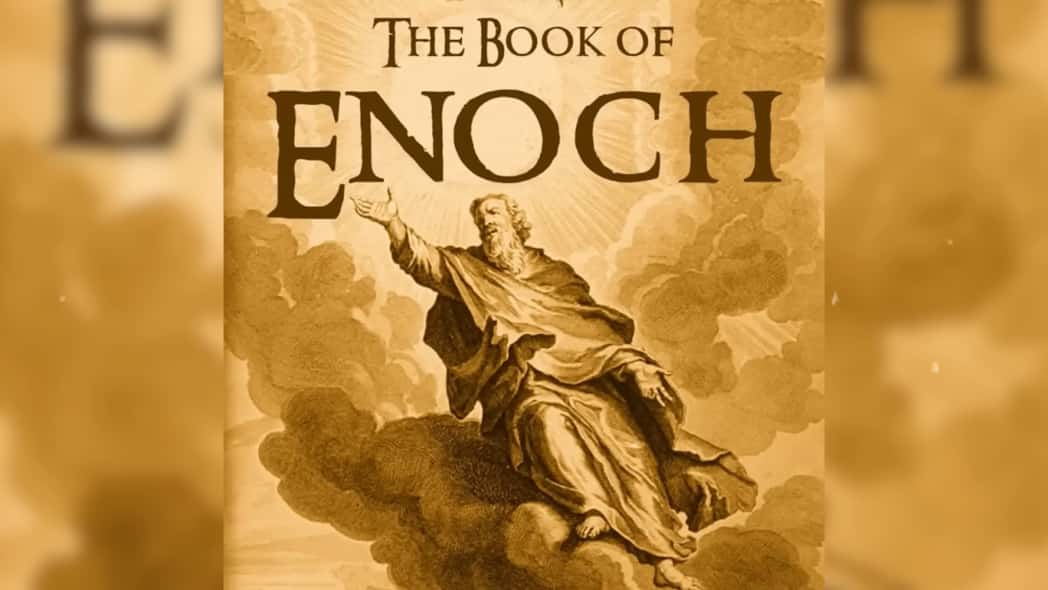
The cautious handling of the Book of Enoch underlines the importance of discernment and a deep understanding of biblical principles. While some scholars appraise the book for its historical insights, it is prudent to not interpret its content as doctrinal truths.
Though the Book of Enoch may offer glimpses into historical and cultural contexts, the canonized Scriptures remain the paramount source of spiritual guidance. Our faith and understanding of God’s salvation plan should rely on the biblical canon, which delivers a comprehensive, integrated message pointing us toward Christ and showing us how to live in harmony with God’s will.
Even though the Book of Enoch might pique some people’s curiosity, it is crucial to approach it with discernment, keeping in mind its non-canonical status. The Christian faith is rooted in the canonical Scriptures, with its primary objective to align our beliefs and practices with the teachings of Jesus Christ and the apostles. Steering clear of the Book of Enoch as a source of authoritative doctrine ensures our faith stays anchored in the steadfast truth of God’s Word.
Conclusion
Studying the Book of Enoch can indeed provide intriguing insights into ancient Jewish thought and mythology. However, its non-canonical status, theological discrepancies, and potential for misinterpretation make it a treacherous path for those seeking spiritual guidance. The Christian community must remain rooted in the vetted, authoritative, and divinely inspired biblical canon. By anchoring our beliefs in the Scriptures, we safeguard our faith and ensure its alignment with the teachings of Jesus Christ and the apostles. Thus, while the Book of Enoch may serve as an academic or historical interest, it should not supplant or distract from the core, life-giving teachings of the canonical Bible.
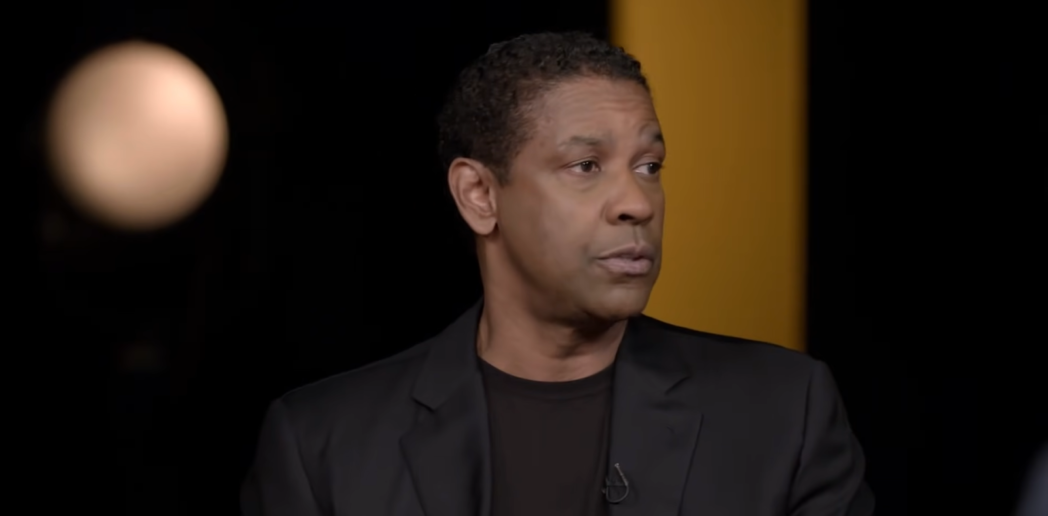
Christian actors boast a rich and well-documented history, with certain individuals attaining widespread acclaim, while others exist largely in obscurity beyond their religious circles. Exploring the theme of Christian actors, let's examine the concept of being 'equally yoked' and its significance in personal relationships.
Explore the profiles of some of the most noteworthy Christian actors below.
Top Christian Actors to Watch in 2024
Denzel Washington
An American actor, known for his roles in films like "Glory" and "Malcolm X," grew up as the son of a pastor. He has earned acclaim in the movie industry with his exceptional ability to resonate with audiences. While his Christian background was known to those close to him, it's only in later years that he's been more vocal about his faith. In a video, while speaking to the graduating class at the University of Pennsylvania, he inspires the students to prioritize their spiritual beliefs.
Mark Wahlberg
Another notable figure, born on June 5, 1971, in Dorchester, Boston, has made a significant impact as an actor and producer. His notable works include leading roles in "Boogie Nights" (1997), "The Departed" (2006), and "Ted" (2012).
David Oyelowo
A British-Nigerian actor has gained recognition for his performances in films such as "Selma" and "The Big Short." His acting career is further highlighted by his roles in "Lincoln," "A United Kingdom," "Queen of Katwe," as well as in "Spooks: The Greater Good" and "Rise of the Planet of the Apes" (2011).
Chris Pratt

An American actor, known for his versatile acting skills, has made a name for himself with his portrayal of Andy Dwyer in the TV series "Parks and Recreation," and as a key character in the Marvel Cinematic Universe. His career achievements include receiving a star on the Hollywood Walk of Fame in 2015.
Kevin Sorbo
An actor, with a Greek heritage from his father and raised in Mound, Minnesota, has become widely recognized for his roles in "Hercules: The Legendary Journeys" and "Andromeda." His talents extend beyond acting, as he has also directed episodes of these series, showcasing his versatility in the entertainment industry.
James Woods
An American actor and producer has made significant contributions to cinema with roles in notable films such as "Once Upon a Time in America" (1984), "Salvador" (1986), "Ghosts of Mississippi" (1996), "Hercules" (1997), "Casino" (1995), and "Videodrome" (1983). His diverse filmography highlights his range and depth as an actor.
Sean Astin
A renowned actor born in Santa Monica, California, is perhaps best known for his portrayal of Samwise Gamgee in "Lord of the Rings." His career also includes notable performances in "Rudy" (1993), "The Goonies" (1985), and "Toy Soldiers" (1991). His acting skills have earned him nominations for several awards, including an Emmy Award for Best Supporting Actor in a Miniseries or Movie for his role in "24 Hour Wedding Day" (2012).
Roma Downey
An actress, producer, and author, she has gained fame for her role in the television series "Touched by an Angel" and has both produced and starred in the miniseries "The Bible." Her filmography includes appearances in acclaimed films like "Gone Girl" (2014), "A Walk Among Tombstones" (2014), and "Good People" (2014). In addition to her film roles, she has had recurring parts in TV shows, including "ER" from 1994-1997, and guest appearances in episodes such as "Castle: 'Till Death Do Us Part'" (2012).
Kirk Cameron
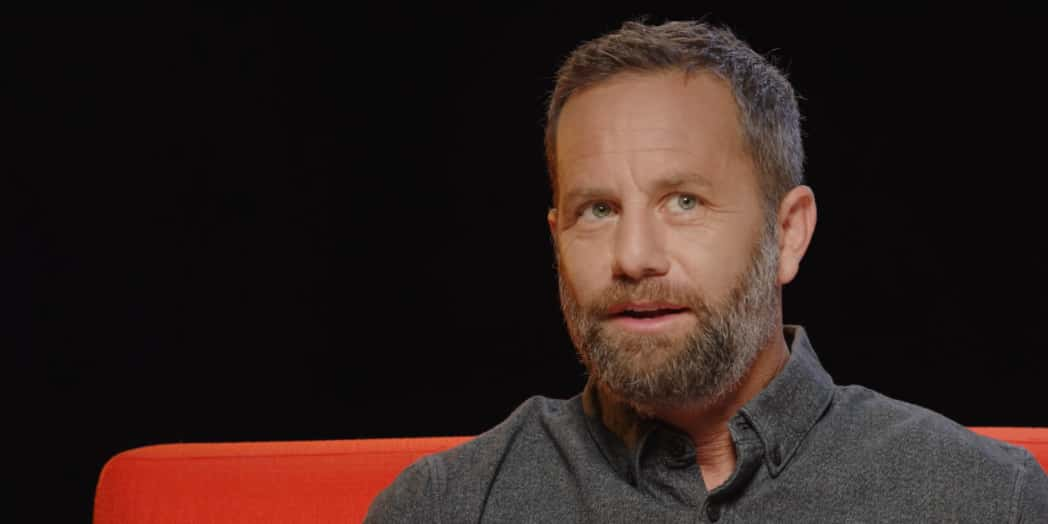
A well-known actor, director, producer, and former teen idol, born in California on October 12, 1970, he is also known for his commitment to Christian-themed projects. He gained widespread recognition for his role as Mike Seaver on the ABC sitcom "Growing Pains," which aired from 1985 to 1992. The series, spanning seven seasons, concluded in a unique way, leaving many plot points open and unresolved, including the future of his character.
Candace Cameron Bure
Candace Cameron Bure is a celebrated American actress and producer, renowned for her portrayal of D. J. Tanner in the iconic sitcom "Full House" and its Netflix sequel series "Fuller House" (2016-present). Bure embarked on her acting journey at the age of 13 with a role in the film "Lassie" (1994). She furthered her career by featuring in numerous television movies, eventually securing recurring roles in "Full House" and "Growing Pains" (1992).
Stephen Baldwin
Stephen Baldwin is a distinguished Christian actor and producer, known for his early start in acting at the age of 12 with "The Ordeal of Patty Hearst" (1988). He is part of the Baldwin family, with his brother Alec Baldwin being an acclaimed actor recognized for his performances in "Saturday Night Live" and "30 Rock". Stephen Baldwin has not only acted but also produced various films.
His production credits include:
- "I Am David" (2004), which was an Academy Award nominee;
- "The Book of Daniel" (2006);
- "Facing the Giants" (2006);
- "The Last Sin Eater" (2007);
- "Fireproof" (2008), which earned nearly $50 million globally;
- "Courageous" (2011), with over $33 million in worldwide earnings;
- "Soul Surfer" (2011), which amassed over $43 million globally;
- "War Room" (2016), grossing over $67 million worldwide.
Conclusion
Numerous Christian actors have successfully carved their niches in Hollywood, unhesitatingly expressing their faith and utilizing their influence for positive impact. These celebrities, whether featuring in major films or popular television series, leverage their prominence to disseminate a message of love and hope, rooted in their spiritual beliefs, to audiences worldwide. Their dedication to sharing their faith through their artistic endeavors exemplifies how fame can be a powerful medium for spreading uplifting and hopeful messages.
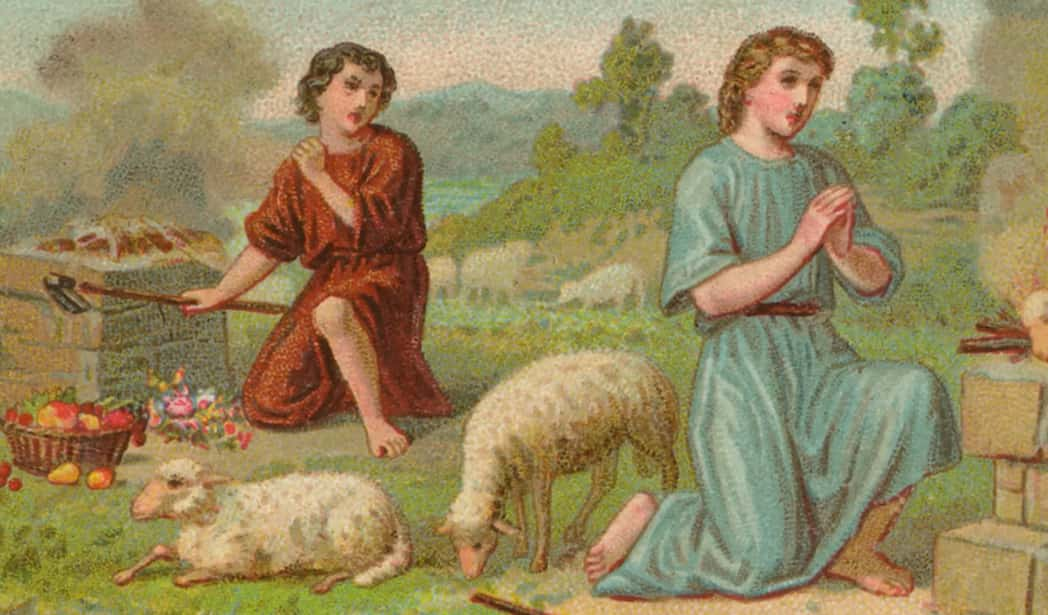
In the narrative of the earliest human family, Cain and Abel emerge as Adam and Eve's first offspring, each choosing different livelihoods—Cain cultivated the land, while Abel tended to flocks. Upon presenting their offerings to the divine, only Abel's was favored, which incited Cain's envy and resentment. These feelings festered, leading to the tragic end of Abel at Cain's hand. This account serves as a timeless lesson against the corrosive nature of jealousy. Examining why Cain killed Abel offers insights into the destructive nature of jealousy and sin. Similarly, the inquiry about going to heaven with tattoos prompts reflection on the interplay between faith, personal choices, and religious beliefs.
Contrasting Offerings and Consequences
In the narrative of Genesis 4, Cain and Abel each presented sacrifices to God. Abel offered the finest from his flock, whereas Cain brought forth fruits from the ground. Despite their contrasting choices, God favored Abel's offering while rejecting Cain's. The subsequent turn of events reveals Cain's destructive emotions as jealousy and anger drove him to commit the tragic act of murdering his brother, who had received divine approval for his sacrificial gesture.
Abel Presented the Finest from his Flock
Though the exact words spoken to Cain by God remain uncertain, the text does offer insight into His response to both Abel and his brother. Following the presentation of sacrifices by both siblings to God, “the LORD respected [Abel] but did not respect Cain and his offering” (Genesis 4:4). In simpler terms, God approved of Abel's offering but disapproved of Cain's.
The New Testament provides a parallel narrative explaining the reasons behind people offering gifts: “all who have been baptized into Christ have put on Christ … they were buried with him through baptism into death in order that, just as Christ was raised from the dead through the glory of the Father…so we too might live a new life" (Romans 6:3-5).
The message is unmistakable: when you offer your utmost, presenting your very self to God, you are embraced as His cherished son or daughter. Conversely, if you offer anything less than your best, including yourself, it is met with rejection.
The Nature of Cain's Offering and Its Acceptance
Cain presented an offering of the earth's produce. The rejection of Cain's offering by God suggests it lacked certain qualities, in contrast to Abel's, which was pleasing to God.
Abel Presented a Sacrifice of Acceptance
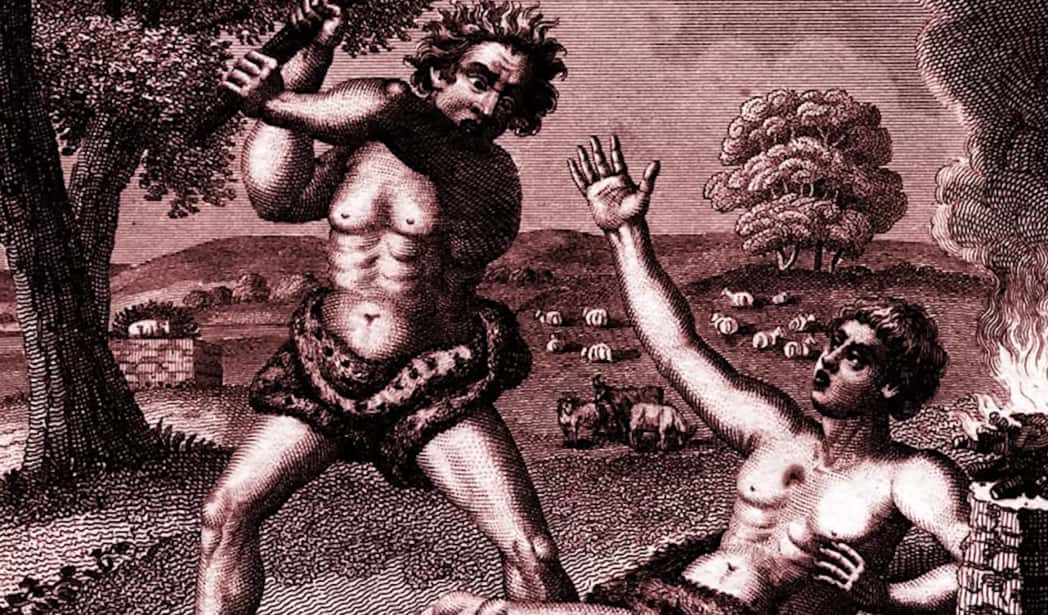
Abel's offering was seen favorably by God, in contrast to Cain's which failed to meet divine expectations. This difference hinged on the nature of the sacrifices each brother presented. According to the biblical instruction in Exodus 23:16, offerings should be made from one's harvest and gatherings on the third day, a timing subject to various interpretations such as Saturday evening or Friday evening for Jewish tradition, or even Tuesday morning or Thursday afternoon.
The exact timeline following the creation week when Cain committed murder is unclear, but it's evident that God's guidelines for sacrifices were already established. The early chapters of Genesis suggest multiple instances where Cain and Abel could have engaged in worship before sin's influence became evident.
Abel's adherence to God's precise instructions is what made his sacrifice acceptable. It's uncertain if Cain was aware of the importance of the 'third day,' and even if he was, knowledge alone doesn't equate to fulfilling God's commands correctly in every similar situation thereafter. Abel's success lay in his perfect compliance with God's directives, whereas Cain's understanding and execution were evidently lacking.
Divine Disapproval: God's Rejection of Cain's Offering
God's rejection of Cain's sacrifice stemmed from its inadequacy as the right kind of offering, unlike Abel's acceptable presentation. The discernment of God's acceptance is evident in Scripture, with Genesis 4:3 specifically stating that God favored Abel's sacrifice while disregarding Cain's. This distinction emphasizes the importance of understanding what pleases God versus what does not, aligning with the broader biblical principle that our faith should set us apart from worldly practices (1 John 2:15-17). Living in a manner distinct from unbelievers becomes crucial for our prayers to find favor with God.
- Abel's offering emitted a pleasing fragrance to God, while Cain's did not meet divine approval. Although the exact words exchanged between God and Cain are undisclosed, the subsequent verse (Genesis 4:7) implies God's displeasure and Cain's resulting anger;
- The consequences of Cain's sin extended beyond his personal retribution, as the ground itself faced a curse (Genesis 4:12). Importantly, the inadequacy of Cain's sacrifice is underscored, suggesting that Abel's offering might have been an expression of gratitude or praise for God's blessings;
- Although the Bible doesn't detail Abel's sacrifice, it mentions his presentation of an animal as a bloodless offering (Genesis 4:4).
In C. John Collins's work, "The Gospel in Genesis," an intriguing perspective is presented: Cain's jealousy over the disparity in their offerings could have fueled his violent reaction, with Abel's very existence being perceived as a threat by Cain.
Envy Unveiled: Cain's Jealousy Over God's Favor
In Genesis 4:1-8, the narrative unfolds as both Cain and Abel present offerings to God. While God accepts Abel's sacrifice, Cain's offering is met with rejection, leading to a surge of anger and jealousy within him. The source of Cain's resentment stems from God's preference for Abel, evident in the closer relationship the latter enjoys with the Lord: "But for Cain and his offering, He had no regard" (Genesis 4:5). Examining Genesis 3:21, where "God made garments of skin for Adam and his wife," prompts consideration that the skins, possibly derived from animal sacrifices offered by Adam or Eve after their expulsion from Eden, could have formed the clothing in the Garden. This implies that both Adam and Eve, before their expulsion, and their post-Eden descendants could participate in sacrificial offerings in accordance with biblical law (Leviticus 17).
The Lurking Menace of Sin
God's warning to Cain in Genesis 4:7 serves as a profound declaration: "Sin is crouching at the door. Its desire is for you, but you must master it." This vivid imagery suggests that sin was positioned just outside Cain's abode, eagerly awaiting an opportunity to inflict harm. Despite the apparent expectation for Cain to resist succumbing to a primal, animalistic urge leading to Abel's murder, he underestimated the formidable strength of sin.
The narrative underscores the human tendency to make unwise choices when confronted with weakness in both mind and body. Cain's tragic actions reveal the pervasive nature of sin's allure, catching individuals off guard with its potent influence. Notably, God's response wasn't punitive due to a direct offense against Him, but rather a consequence of Cain succumbing to the destructive forces of greed and envy, rather than acting out of love for his brother Abel.
What Motivated Cain to Take His Brother's Life?
Cain's jealousy toward Abel arose from the perception that God favored his brother more. In his resentment, Cain attempted to murder Abel. However, God intervened, warning Cain that the act of killing carries consequences. Despite this admonition, the following day saw Cain committing the same heinous act, but this time, there was no escape. God's punishment came swiftly, banishing Cain to a distant place, ensuring his isolation from others to prevent any further harm or danger to him.
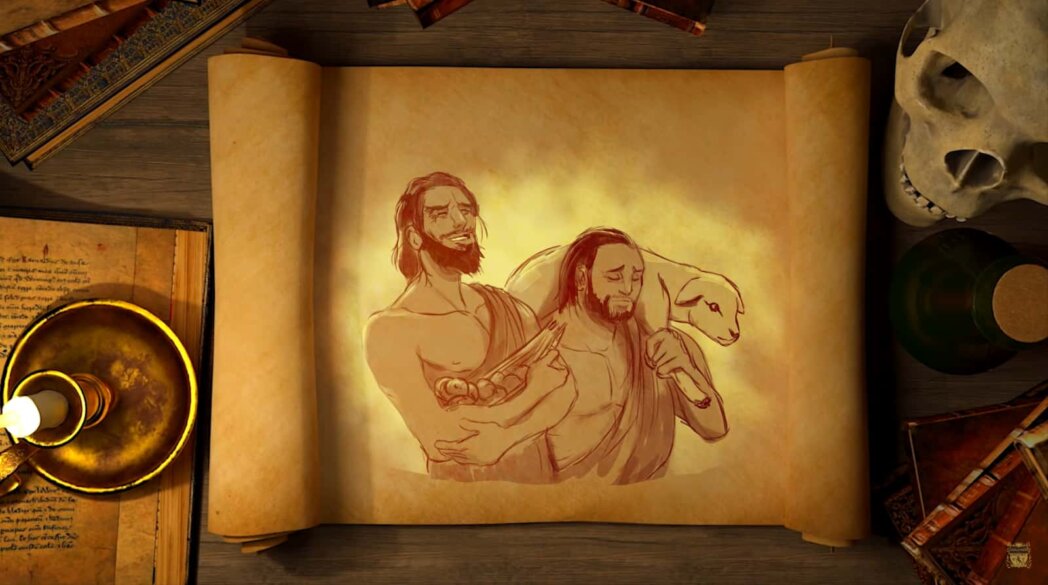
Cain's Refusal to Admit
When God questioned Cain about Abel, he didn't outright deny his actions; instead, he inquired about his brother's whereabouts. This implies that Cain was fully aware of his deed and anticipated being held accountable by God. The passage suggests a nuanced belief on Cain's part – while he acknowledged the existence of God, it hints at a selective acceptance of God's word and commandment against killing. It's noteworthy that individuals who reject the authority of Scripture often assert that such commandments never existed, adding a layer of complexity to Cain's mindset.
The Sinful Roots of Jealousy
According to the Bible, the admonition is clear: "Be not envious one of another, brethren, for envy is a sin" (James 4:1). The scripture further advises us to exercise restraint and be slow to anger.
The implication is that jealousy, when unchecked, can evolve into the sins of envy and anger. Considering this, it becomes crucial to reflect on whether jealousy is truly beneficial or if it might be inflicting more harm than good upon us.
Conclusion
This narrative holds immense significance, serving as a stark reminder of how sin has the power to devastate our lives. Cain's act of murdering his brother, driven by jealousy, resulted in a profound tragedy. It underscores the imperative of resisting the destructive influence of jealousy and highlights the importance of guarding against its detrimental impact on our lives.

The Bible deems tattoos as unclean, raising questions about how Christians should view them. Does having a tattoo jeopardize one's chances of entering heaven? Considering the implications of tattoos on entry into heaven prompts reflection on moral complexities, echoing the profound biblical narrative that explores why Cain killed Abel. Both themes encourage contemplation of personal choices, faith, and the journey towards spiritual redemption. In the following discussion, we'll explore various perspectives on whether a Christian can attain heaven with a tattoo.
Is there any Reference to Tattoos in the Bible?
The Bible does indeed address the subject of tattoos, articulating a connection between divine law and the human body. Leviticus 19:28 explicitly instructs, "Do not cut your bodies for the dead or put tattoo marks on yourselves." This prohibition is rooted in the avoidance of pagan customs prevalent at the time, which included body modifications for ritual purposes or to express mourning for the deceased. Tattoos were similarly employed in pagan rites and often signified ownership over slaves or marked individuals as criminals.
- In the narrative of the Old Testament, God's directives to the Israelites emphasized maintaining distinctiveness from the pagan nations, cautioning against emulating their idolatrous worship practices and body markings (Leviticus 19:1-2);
- These commandments aimed to set Israel apart and protect them from the influence of neighboring pagan customs (Deuteronomy 14:2);
- The New Testament continues this theme, advising against close associations with idol worshippers (1 Corinthians 5:9-13; 6:9-11);
- While times have changed, the fundamental principle remains: Christians are discouraged from adopting societal trends that conflict with Biblical teachings.
Is Getting a Tattoo Considered a Sin?

Tattoos serve as a form of self-expression and a declaration of personal beliefs for many individuals. However, there are concerns about the spiritual ramifications of obtaining a tattoo and whether it constitutes a sin. The stance of the Bible on tattoos stems from the context in which they were used historically: as signs of pagan worship. In ancient times, tattoos were often symbols of ownership by slave masters or a means of punishment in educational and penal institutions. The Hebrew term that we interpret as "tattoo" in Leviticus 19:28 more accurately translates to "mark," indicating a permanent imprint on the skin.
The apprehension surrounding tattoos as a sin finds its basis in Old Testament law, which unequivocally forbade such body markings: “You must not make cuts in your body for a dead person, and you must not make tattoo markings on yourselves” (Leviticus 19:28). This injunction prompts the question of whether the rule was merely capricious or served a more profound purpose.
To grasp the full intent of this scripture, it's crucial to consider its broader context. Leviticus 19:26-30 conveys that bodily modifications, including tattoos, were part of pagan worship rituals. Pagan priests would intentionally scar and mark themselves during religious ceremonies. For some, these marks were believed to bestow magical abilities; for others, they were simply seen as offerings that pleased their gods. Essentially, these tattoos were expressions of religious commitment, meant to forge a deeper connection with their gods. In contrast, Israel was chosen to be distinct from other nations and was therefore prohibited from engaging in such pagan customs, particularly those that altered their physical appearance.
This wider perspective elucidates the reasoning behind the divine mandate against tattoos for His people. The prohibition transcended the act itself, focusing on the symbolism and the associations that tattoos represented.
Can Tattoos Influence Our Journey to Heaven?
- The question of whether tattoos can affect one's eternal destiny is one that many ponder;
- From what the Bible presents, tattoos in themselves are not categorized as sinful;
- The scriptural references to tattoos relate specifically to the prohibition of skin markings associated with the worship of idols;
- The New Testament, through Paul's teachings in Colossians 3:5 and 1 Corinthians 6:19-20, reinforces the idea that believers should abstain from behaviors that might lead them or others into sin, including acquiring tattoos linked with idolatry or the veneration of deities other than the one true God.
The general Christian consensus holds that tattoos are not a barrier to heaven, but rather the intentions and beliefs behind them could be of concern. Christianity, with its rich tapestry of beliefs and practices, offers various perspectives on this issue. However, most Christians converge on the notion that it's not the presence of tattoos on the body but the underlying reasons for them that matters in the context of salvation.

- Paul's message in 1 Corinthians 6:19-20 underlines the concept of our bodies as temples of the Holy Spirit, granted to us by God, and for which He paid a significant price;
- Hence, this calls for a conscious effort to honor God with our bodies, which are considered holy;
- The implication here is not a blanket prohibition on tattoos but a call to deliberate consideration of how actions, such as getting tattoos, honor the sacredness of our bodies as dwellings of divine presence.
Conclusion
Seeking the counsel of the Holy Spirit is essential when contemplating the personal choice of acquiring a tattoo or body piercings. This decision rests with the individual, who should seek alignment with God's will through spiritual discernment.
In Christianity, the body is revered as a temple of God, and this reverence extends to being mindful of what we introduce to our bodies. As an illustration, some Christians abstain from consuming pork in honor of this principle. It's critical to note, though, that the Bible does not explicitly forbid tattoos; it cautions against tattoos as an expression of idol worship. Hence, tattoos can be a reflection of one's faith when they symbolize spiritual beliefs, like tattoos of crosses or other religious emblems that some Christians wear as a testament to their faith.
If you're deliberating the addition of a tattoo, it's vital to seek divine guidance through prayer, asking God to illuminate your path. For those who have tattoos and are concerned about their spiritual implications, it's comforting to remember that God's love is unconditional. The presence of tattoos does not determine one's eligibility for heaven, as divine love and grace extend beyond physical markings.

In the rich tapestry of biblical accounts, King Solomon emerges as an exemplar of wisdom and governance. Being the progeny of King David, his path to monarchy is steeped in divine intervention and remarkable precocity. In this exploration, we delve into the age of Solomon at the time of his coronation, shedding light on the importance of his early rise to power and its lasting influence on the history of ancient Israel.
The Enigma of Solomon’s Age
Unraveling the precise age of Solomon when he ascended the throne necessitates a deep dive into biblical chronicles, which are for the most part, enigmatic. While the scriptures do not explicitly state his age at the time of his inauguration, through careful examination and interpretation of the text, scholars have postulated various theories.
- Some believe he was around 12 to 16 years old considering the biblical reference to his youth and inexperience;
- Others conjecture his age to be 20, basing their speculation on the Jewish tradition of considering a boy as an adult at this age;
- A more conservative estimate places Solomon in his early twenties or perhaps even later, taking into account the responsibilities and demands of a monarch.
While the truth remains elusive, these theories reflect the wide spectrum of interpretations that exist.
Solomon’s Early Ascension: Significance and Impact
Looking beyond the mystery of his age, Solomon’s early ascension holds significant implications. The divine mandate is not dependent on age, and this is exemplified in Solomon’s story. His wisdom, an endowment from God, enabled him to rule judiciously and construct the iconic Temple of Jerusalem which became a symbol of national unity.
Solomon’s reign marked a golden era for Israel – a period of peace, prosperity and significant architectural achievements. Despite his youth, he effectively navigated the complexities of leadership, demonstrating a maturity beyond his years.
Moreover, Solomon’s early ascension to the throne served as an invaluable lesson in leadership, emphasizing the importance of wisdom and divine guidance over physical age or strength. It’s a potent reminder that effective leadership transcends age and is anchored in wisdom, understanding, and the ability to inspire unity.
The Ascension of Solomon: A Story of Providence and Wisdom
Upon King David’s demise, the succession to the throne was fraught with uncertainty. Adonijah, the eldest surviving son, attempted to usurp power. However, the discerning intervention of Prophet Nathan and Bathsheba orchestrated a different sequence of events. As narrated in 1 Kings 1:32-40, Solomon, still a young man, was anointed as king during King David’s lifetime. This decisive move ensured tranquillity during the transition of power and marked the commencement of a new era under Solomon’s rule.
The Youthful Monarch: Solomon’s Age at Ascension
The Biblical texts remain silent on the exact age of Solomon at his coronation, leaving it a subject of conjecture among scholars and historians. Digging into historical analyses and scholarly suppositions, it is generally believed that Solomon ascended the throne somewhere in his early twenties, with estimates ranging from 20 to 22 years old.
Though young in years, Solomon’s rule would demonstrate a maturity and wisdom that far surpassed his age. His ascension as a young king serves as a shining example of how divine wisdom and guidance can trump youth and inexperience.
A Legacy Beyond Age: The Lasting Impact of Solomon’s Reign
From his unexpected crowning to his successful rule, Solomon’s story is a testament to the power of divine wisdom and providence. Despite the uncertainty surrounding his exact age at the moment of ascension, Solomon’s reign produced an enduring legacy that transcended mere chronology. His reign was marked by:
- Monumental architectural endeavors such as the construction of the First Temple in Jerusalem;
- The expansion of Israel’s territory to its greatest extent;
- The establishment of a prosperous and peaceful kingdom.
Moreover, Solomon’s fame for his wisdom attracted attention far beyond Israel’s borders, including the celebrated visit of the Queen of Sheba. His proverbs and songs have been preserved in the Biblical books of Proverbs, Ecclesiastes, and Song of Solomon, further contributing to his enduring legacy.
Proverbs and Parables: The Saga of Solomon’s Wisdom
One of the most striking attributes of Solomon’s reign was his extraordinary wisdom. He was renowned for his judicious decision-making ability and his sharp discernment, which helped him navigate the intricate affairs of governance with ease. Several anecdotes highlight his unparalleled wisdom, with the dispute between two women over a baby (1 Kings 3:16-28) standing as a classic example.
The Test of Wisdom: Solomon and the Maternal Dispute
In this renowned incident, two women came to Solomon with a starkly complicated conundrum. Both claimed to be the real mother of the same infant. Faced with this challenging dilemma, Solomon made a startling decision. He suggested to split the baby into two halves and give each woman one half. His surprising verdict shocked everyone present. However, this was an ingenious test. Realizing that the genuine mother would rather surrender her right than see her child harmed, Solomon keenly observed the women’s reactions.
When one woman readily agreed to Solomon’s drastic proposal, whereas the other begged him not to harm the child, Solomon’s wisdom shone through. His astute observation and understanding of human nature allowed him to identify the real mother, who was willing to give up her claim to save her child’s life. Thus, Solomon’s ruling was not only fair but uniquely insightful, revealing his God-given wisdom and aptitude for just governance.
The Impact of Solomon’s Wisdom: A Reign Marked by Progress
Solomon’s wisdom wasn’t limited to solving disputes. His knowledge and discernment fueled his reign, driving progress and prosperity within his kingdom. His understanding of diplomacy led to peaceful relations with neighboring nations, and his architectural vision drove the construction of the First Temple, an extraordinary achievement that stood as a symbol of national unity and religious devotion.
Additionally, Solomon’s wisdom was immortalized in the biblical books of Proverbs, Ecclesiastes, and Song of Solomon. His wise sayings continue to guide and inspire people to this day, further underscoring his enduring influence.
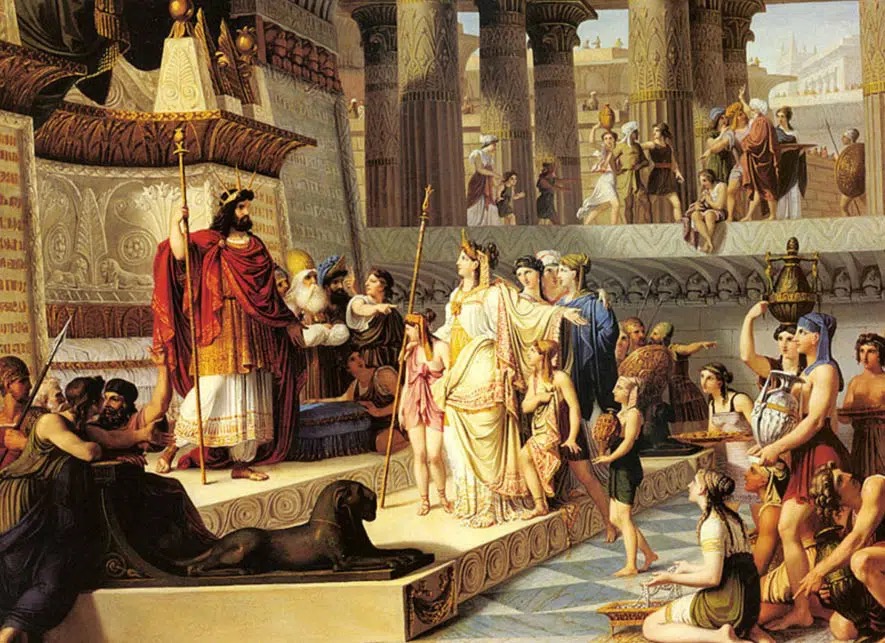
Solomon’s Reign: A Time of Monumental Construction and Expansion
Beyond the captivating story of his ascension and remarkable wisdom, King Solomon is also remembered for his significant contributions to nation-building and expansion of the kingdom. His rule marked a golden era of architectural marvels and political growth, the echoes of which can still be heard in the annals of history.
The First Temple: The Crowning Jewel of King Solomon’s Reign
One of Solomon’s most monumental feats was the construction of the First Temple in Jerusalem. This grand sanctuary, also known as Solomon’s Temple, was considered a divine masterpiece. It became the central place of worship for the Israelites, housing the Ark of the Covenant.
The splendor of the temple showcased the remarkable prosperity of the kingdom under Solomon’s rule. The elaborate artistry, the intricate carvings, and the lavish use of precious metals made the temple an architectural marvel of the time. Its construction not only amplified the national pride of the Israelites but also pointed to Solomon’s devotion and obedience to God’s directives.
Reign of Expansion: King Solomon’s Diplomatic Prowess
Solomon’s reign wasn’t only about architectural achievements; he also significantly extended Israel’s territorial reach. Solomon masterfully orchestrated strategic alliances, sealed trade agreements, and established an extensive administrative network, effectively expanding and consolidating the kingdom’s influence.
His diplomacy skills were legendary. Through forging alliances, notably with the Pharaoh of Egypt and King Hiram of Tyre, Solomon ensured peace with neighboring kingdoms. These alliances not only stabilized Israel’s geopolitical standing but also opened avenues for trade and cultural exchange.
Under Solomon’s wise leadership, Israel experienced remarkable growth, moving from a relatively small kingdom to a significant regional power.
The Enigma Continues: Authorship of the Book of Revelation
As we journey through the multifaceted tapestry of biblical mysteries, it is only fitting to briefly touch upon another enigmatic facet: the authorship of the Book of Revelation. Much like the age of King Solomon at his ascension, the identity of the author behind this apocalyptic text remains a subject of debate and intrigue among scholars and theologians.
Traditionally attributed to John the Apostle, the Book of Revelation stands as a prophetic and allegorical work that offers profound insights into the eschatological narrative. Its vivid imagery and cryptic symbolism have captivated readers and scholars for centuries, while its authorship has remained a matter of speculation.
Some contend that John the Apostle, the beloved disciple of Jesus, penned this visionary tome during his exile on the island of Patmos. Others propose the existence of a different John, known as John of Patmos, as the author. The ambiguity surrounding the author's identity adds yet another layer of complexity to the intricate web of biblical mysteries.
Concluding Insights
King Solomon’s reign encapsulates a pivotal chapter in biblical history characterized by wisdom, architectural grandeur, and diplomatic expansion. Despite the controversies around his ascension and the uncertainty about his age when he took on the mantle of leadership, his reign marked an era of peace, prosperity, and progress.
The construction of the First Temple and the expansion of the kingdom stand as twin pillars of Solomon’s successful rule. His leadership encapsulates the ethos of wisdom, tactical acumen, and unswerving devotion to God.
The story of Solomon’s reign underscores the essence of effective leadership - wisdom and the courage to take bold strides towards progress. It serves as a timeless template for leaders from all ages, reminding them that with wisdom, judicious decision-making, and strategic alliances, one can steer their realm towards unparalleled growth and prosperity.

The intrigue encompassing the physical stature of Jesus, including his height, is immense. Naturally, followers who revere the man who was crucified amidst two criminals are inherently fascinated to unearth details about his physical appearance. However, picturing his true physique becomes a complex task for us, as millennia have passed since Jesus’ time on earth.
The Purpose of the New Testament Writers
An element of considerable interest here is that the height of Jesus did not capture the interest of the initial New Testament authors. Being disciples and contemporaries of Jesus, they were aware of his physical attributes. Their primary intent was not to chronicle physical details but to pen down significant theological themes that would illuminate understanding about God’s truth.
In their writings:
- Theological themes took precedence over physical descriptions;
- Their aim was to provide spiritual enlightenment rather than to paint an earthly image of Jesus;
- They penned their experiences with Jesus to reinforce the essence of his teachings.
Estimating the Height of Jesus
In the absence of precise historical records, determining Jesus’ height with certainty is a challenging endeavor. Nonetheless, we can certainly make an educated approximation.
For estimation, we can:
- Analyze the average height of men during that period in the Middle East;
- Consider archaeological findings and anthropological studies;
- Interpret depictions of Jesus in early Christian art.
Unearthing the Height of Jesus: A Historical Deep Dive
The Popular Depiction of Jesus
Jesus Christ, the messiah of Christianity, is frequently portrayed as a tall, slender man who stands taller than his apostles in much of the prevalent imagery. Such characterizations often make us ponder: How tall was Jesus, really?
Scholars echo a consensus that Jesus likely stood around 5’7" (1.70m), marking him as slightly taller than the average man of his era. The assumption is based on the context of first-century Palestine, where the average height of adult males stood at about 5’3".
Factors to Consider Extrapolating Jesus’ Height
To gauge how Jesus compared to other males of his time, we need to factor in the following variables:
- Physical Characteristics: Understanding Jesus’ height demands a comprehension of what he likely looked like. While precise descriptions are lacking in historical texts, we can draw inferences from the average traits of men from his socio-cultural context;
- Ancestral Background: Jesus’ height can also be influenced by his genetic ancestry. Being from Bethlehem of Judea, he would share common genetic traits with men of first-century Palestine;
- First Century Palestine Context: This involves considering the general health, nutrition, and living conditions prevalent during the time that might have influenced an individual’s stature.
Analyzing Cultural and Archaeological Evidence
To get a clearer picture of Jesus’ height, we can also turn to cultural and archaeological data from that era:
- Cultural Records: Study of ancient literature, art, and sculptures can provide valuable cues about the typical physical attributes of the population;
- Archaeological Finds: Excavation of skeletal remains from first-century Palestine can offer direct evidence about the average height of men during that period.
Tracing the Physical Attributes of Jesus: An Archaeological and Historical Inquiry
Reflection on Jesus’ Physical Characteristics
Attempting to sketch an accurate portrait of Jesus’ physical attributes is a task fraught with uncertainties. The Gospels and other early sources offer insights into his life and teachings but fall short of providing an explicit description of his physical appearance, including his height.
The absence of concrete measurements in the historical transcripts leads us to speculate based on the characteristics of the average male population during the era Jesus lived.
Factoring in Historical Evidence
There are multiple historical aspects to consider when trying to determine Jesus’ physical appearance:
- Common Physical Attributes: By evaluating the physical characteristics typically prevalent in first-century Palestine, we can make an educated guess. This would include aspects like height, weight, complexion, hair, and eye color;
- Life Expectancy: The common age of death during that era could help speculate Jesus’ age at his crucifixion, an aspect that remains a subject of multiple theories;
- Living Conditions: The living conditions, climatic influences, and nutritional adequacy of that time would have significantly influenced his physical traits.
Turning To Anthropology and Archaeology
Anthropological and archaeological studies also enhance our understanding:
- Anthropological Approach: Considering the genetic ancestry and biological characteristics of the region’s population echoes valuable insights into his probable physical traits;
- Archaeological Evidence: Excavation of human remains from that era can provide direct evidence of the population’s typical physical attributes and life span.

Decoding the Linguistic Landscape of Jesus’ Era
Unveiling the Language of Jesus
A dive into the linguistic milieu of the time when Jesus lived reveals that Aramaic served as the lingua franca, the common language of the people. This Semitic language, closely related to Hebrew, widely prevalent across the regions of the Near East, is thought to have been Jesus’ primary language.
In addition to Aramaic, several other languages left their imprint on the linguistic landscape of Jesus’ era:
- Hebrew: The sacred language of the Jewish scriptures and liturgy, Hebrew was known to educated Jews, including scholars and scribes;
- Greek: Given Galilee and Judea’s location within the Roman province of Syria, Greek was also quite prevalent. Greek was the language of administration and commerce, and it is likely that Jesus had some degree of proficiency in it;
- Latin: As the administrative language of the Roman Empire, Latin had a certain degree of influence, especially in official circles and among the elites.
Understanding the Geographical Context
The land where Jesus lived, taught, and carried out most of his ministry is known today as present-day Israel or Palestine. This region was an integral part of the Roman Empire during Jesus’ time and was home to a rich mosaic of cultures, languages, and ethnicities.
It is also important to note:
- The region was known as the Land of Canaan in antiquity;
- It became the Promised Land for the Israelites after their Exodus from Egypt;
- Over the centuries, it has borne witness to numerous historical events and shifting political landscapes.
Delving into the Historical Features of Jesus
The Fascination with Jesus’ Attributes
The subject of Jesus Christ’s physical appearance, specifically his height, has been a topic of enduring curiosity. Unveiling these aspects offers a fresh perspective into the life and times of one of history’s most influential figures.
Gleaning insights from historical data and cultural context of the 1st century, we can ascertain some key points about Jesus’ potential height and physical characteristics. However, it’s essential to remember that the following factors can contribute to a more nuanced understanding:
- Historical Background: Considering the conditions of 1st-century AD, average height and health conditions can offer clues about Jesus’ likely stature;
- Regional Demographics: The typical physical attributes of the inhabitants of Jesus’ homeland, the Judea region of Palestine, can guide us towards a more accurate approximation;
- Nutritional Factors: The dietary habits prevalent during Jesus’ time influence the physical growth and attributes of the population.
Unveiling the Significant Truth
While we strive to paint a physical picture of Jesus, it is crucial to remember the true essence of Jesus’ legacy. Regardless of his height or physical attributes, the profound influence of his teachings significantly impacted humanity.
- Jesus’ teachings have formed the foundation for a major world religion, Christianity;
- His lessons have shaped moral and ethical norms across cultures and generations;
- His life and work have invariably influenced art, literature, philosophy, and law.
How Old Was Solomon When He Became King?
Intriguingly, the quest for historical accuracy extends beyond Jesus's stature. Another enigmatic figure of antiquity, King Solomon, piques curiosity. One question that arises is, "How old was Solomon when he became king?" This inquiry, like the pursuit of Jesus's height, underscores the enduring fascination with the intricate tapestry of history and the desire to unravel its mysteries.
Unveiling the Profound Truth
While we endeavor to construct a physical representation of Jesus, it is paramount to acknowledge the true essence of his legacy. Regardless of his height or physical attributes, the profound impact of his teachings on humanity remains undeniable.
Jesus's teachings serve as the cornerstone of a major world religion, Christianity.
His lessons have shaped moral and ethical norms across diverse cultures and generations.
His life and work have left an indelible mark on art, literature, philosophy, and jurisprudence.
Conclusion
Piecing together the physical stature of Jesus from the historical jigsaw is indeed an intriguing exercise that blends scholarly consensus, archaeological clues, and sociocultural context. While we can make educated conjectures on his likely height and appearance, the absence of explicit records leaves room for interpretation. Yet, irrespective of these physical speculations, the real height of Jesus shines through his profound teachings, moral grandeur, and the immense influence he wields over humanity. His timeless lessons and his towering spiritual stature remain immeasurable, crossing boundaries of time, culture, and faith.
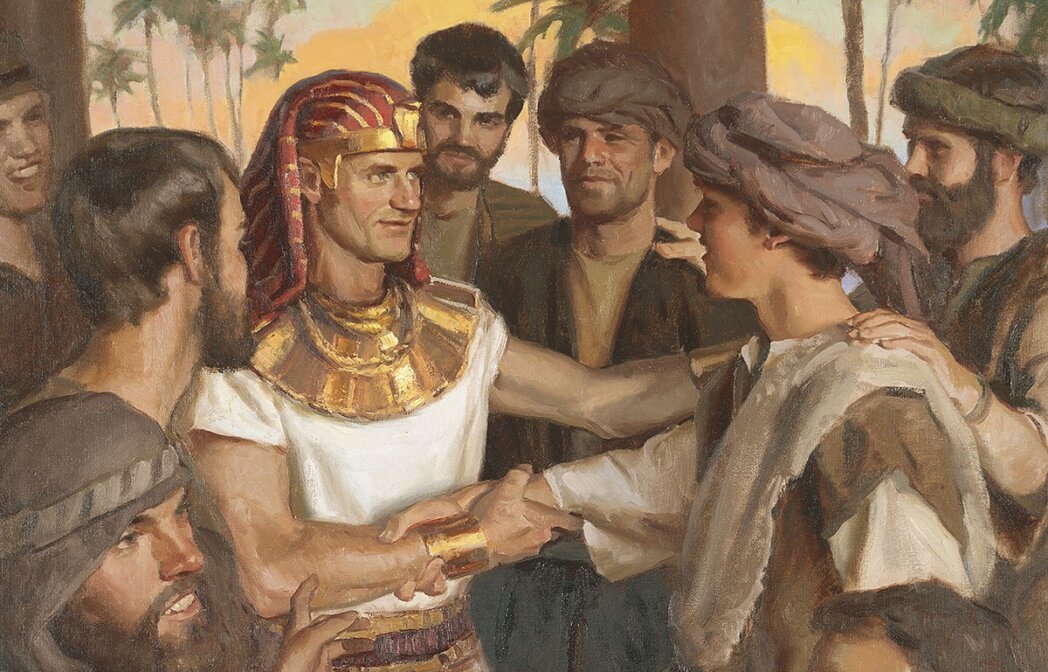
The biblical narrative of Joseph’s life is widely recognized, yet many aspects remain less explored or understood. This tale, often retold, holds numerous captivating elements worth delving into.
The Family Tree of Jacob, Also Known as Israel
Jacob, rechristened as Israel, is a central figure in this narrative. He fathered twelve sons and a daughter, but his union with his beloved wife Rachel resulted in two more sons. The eldest was Benjamin, followed by the younger Dan, as narrated in Genesis 35:24.
The Act of Betrayal by Joseph’s Brothers
A major turning point in Joseph’s life came when he was betrayed by his own brothers. They discovered him in an intimate situation with their mother Leah, which led to their decision to sell him into slavery. This event, mentioned in Genesis 37:1-11, marked the beginning of Joseph’s journey to Egypt.
Joseph’s Life in Egypt
In Egypt, Joseph found himself working for Potiphar, a high-ranking military officer. Despite his conditions, Joseph demonstrated remarkable resilience and eventually rose to prominence in Pharaoh’s court. Amidst these developments, two fellow Hebrews, Judah and Zaphnath-Paaneah, were presented before Joseph as prisoners, further complicating his situation in Genesis 41:45.
The Unveiling and Family Reunion
A poignant moment unfolds when Joseph unexpectedly encounters his brothers again. He recognized them by their voices during a family gathering, as documented in Genesis 45:4. In contrast, his brothers had no clue about Joseph’s identity until he revealed himself.
Joseph, a renowned Biblical figure, was one of twelve sons born to Jacob, also identified as Israel. There has always been intrigue and curiosity about Joseph’s brothers, an integral part of this riveting narrative.
Jacob fathered twelve sons and a daughter. The initial eleven sons were birthed by Leah, his wife, while the last son arrived through Rachel. These son’s names were Reuben, Simeon, Levi, Judah, Dan, Naphtali, Gad, Asher, and Issachar. Joseph, also a son of Jacob and Rachel, held a unique spot as the preferred child.
The depth of Jacob’s affection for Joseph was evident, as he demonstrated it by bestowing upon Joseph a distinctive multi-colored cloak, as accounted in Genesis 37:3. However, this explicit favoritism didn’t sit well with his siblings, leading to a deep-rooted resentment that eventually manifested in an act of ultimate betrayal.
Joseph’s narrative takes a significant turn when he recounted a prophetic dream to his brothers, envisioning them bowing down to him, akin to their submission to Pharaoh as per Genesis 37:8. This prediction was met with further hatred and suspicion, fostering a belief that Joseph was attempting to usurp their inheritance and dictate their lives (Genesis 37:11).
Compounded by their father’s apparent bias and their growing resentment, Joseph’s siblings were fueled by jealousy (Genesis 37:4). Unable to tolerate his presence, they resolved to sell Joseph into slavery for a mere 20 pieces of silver as described in Genesis 37:27.
The Unfolding of Joseph’s Life in Egypt and his Brothers’ Migration to Goshen
In Egypt, destiny had grand plans for Joseph. Elevated to a position of power under Pharaoh, he interpreted the ruler’s puzzling dreams and instituted a visionary grain storage policy. Joseph’s prescience proved to be a lifeline that saved countless lives during an ensuing famine.
His brothers, however, unaware of Joseph’s ascent, were grappling with the harsh effects of the famine in their homeland. Seeking a remedy, they embarked on a journey to Egypt where grain was abundantly available. The fear of being recognized by Joseph and his potential reprisal for their past misdeeds cast a shadow over their quest (Genesis 42:36).
To mask their identities, they settled in Goshen, a prosperous region favorable for livestock grazing (Genesis 47:6). They hoped to reside incognito, maintaining a low profile until it was safe to return home, free from the risk of a vindictive encounter with Joseph.
Indeed, Goshen was a significant location in this narrative. It became a sanctuary for Jacob’s family where they could thrive amid Egypt’s prosperity while preserving their unique heritage and way of life.

A Moment of Curiosity: The Stature of Jesus
Amidst the rich tapestry of Joseph's saga, an interlude of curiosity emerges—an inquiry that occasionally occupies the thoughts of the inquisitive: "How tall is Jesus?" While this question veers slightly from the central narrative, it aligns with the spirit of exploration and inquiry that imbues the study of biblical history.
Conclusion
The intricate narrative of Joseph and his brothers serves as a captivating study of complex family dynamics, power dynamics, and the transformative power of forgiveness. From the brother’s betrayal to Joseph’s ascension under Pharaoh and their eventual reunion in Goshen, this narrative presents a rich tapestry of fears, hopes, redemption and reconciliation. The story emphasizes timeless life lessons on resilience, faith, humility, remorse, and the indomitable human spirit’s ability to rise above adversities, providing valuable insights for the modern reader.

The epic saga of Noah constructing the ark, complying to religious obedience, and illustrating the dynamic workings of God through His followers is a tale that transcends time. A common inquiry connected to this fascinating account is the age of Noah when he undertook the Herculean task of building the ark. This article leads you on an explorative quest to reveal Noah’s age during this significant period of biblical history. We will journey into understanding the implications of Noah’s divine assignment and the teachings it imparts for today’s faithful.
Analyzing Genesis 5:32 (ESV): A Clue to Noah’s Age
“Noah was five hundred years old, and Noah fathered Shem, Ham, and Japheth.” This scripture provides a crucial lead about Noah’s age, stating he was five hundred years old when he sired his three sons, Shem, Ham, and Japheth. Let’s dive deeper into the interpretation of this verse:
- Noah’s Age: The verse explicitly states that Noah was 500 years old when he became a father. This marked the beginning of a new chapter in his life;
- The Sons: Shem, Ham, and Japheth were the sons of Noah. They play significant roles in the narrative, acting as the progenitors of post-flood human life.
By thoroughly examining this verse, we can establish a fundamental understanding of Noah’s age during this monumental phase of his life. However, the bible encompasses more context that allows us to draw a comprehensive picture of Noah’s life and times.
Beyond Genesis: Piecing Together Noah’s Timeline
Moving beyond Genesis 5:32, we explore other biblical references that present additional pieces of the puzzle. By intricately weaving these threads together, we can hope to construct a fuller portrayal of Noah’s lifespan, particularly during the time he received the divine command to build the ark.
Answering a Divine Calling: Noah and the Construction of the Ark
Noah’s dedication to God’s decree marked a significant turning point in his story. In Genesis 6:14-16 (ESV), God details the structure and design of the ark. This vessel was destined to be a safe harbor during the forthcoming extensive deluge. Noah’s steadfast devotion to these guidelines showcased his unyielding faith in God’s dominance and outline for the future.
Major Highlights of Genesis 6:14-16 (ESV):
- Material: God gave explicit instruction for the ark to be made of gopher wood which was believed to be resistant to water;
- Design: The ark was to be made with rooms within it, showing provision for both human and animal residents;
- Specifications: The ark’s precise measurements were conveyed - it was to be 300 cubits long, 50 cubits wide, and 30 cubits high, making it a huge structure for that time.
Taking these elaborate details into account, we can infer the magnitude and scale of the task that Noah undertook, all in obedience to God’s command.
In Genesis 6:22 (ESV), it is mentioned, “Noah did this; he did all that God commanded him.” This verse emphasizes Noah’s obedience and eagerness to undertake the intimidating responsibility of crafting the ark.
Lessons from Noah’s Obedience:
- Faith: Noah’s response to God’s instructions demonstrates immense faith. Despite the daunting task ahead, he obeyed willingly, teaching us the importance of trust in God’s plans;
- Commitment: The building of the ark wasn’t a brief endeavor. It required patience and steadfast commitment, qualities that are valuable even today;
- Courage: Noah’s courage shone through his actions. Building an ark of such magnitude must have invited ridicule and scorn from others, yet Noah persisted without fear.
Decoding the Age of Noah During the Ark’s Construction
The Book of Genesis provides more input about Noah’s age during a significant event. According to Genesis 7:6 (ESV), “Noah was six hundred years old when the flood of waters came upon the earth.” Evidently, Noah was six hundred years old when the extensive flood began its devastating course across the earth.
Emphasizing the Themes of Resilience and Long-term Commitment
The adventure of Noah building the ark was an extensive process, covering numerous decades, thus symbolizing the virtues of resilience, long-term commitment, and steadfast dedication to God’s instructions. His persistent commitment to the mission, despite potential societal doubts and skepticism, serves as a potent reminder of the profound impact of faithfulness.
Hebrews 11:7 (ESV), says, “By faith Noah, being warned by God concerning events as yet unseen, in reverent fear constructed an ark for the saving of his household. By this, he condemned the world and became an heir of the righteousness that comes by faith.” This verse acknowledges Noah’s faith-propelled actions and their far-reaching consequences.
Valuable Takeaways from Noah’s Journey:
- Resilience: Noah’s long-term commitment to building the ark, against perhaps societal skepticism, reflects his resilience and unwavering dedication;
- Faith: Taking on a task of such magnitude, based on a future warning, speaks volumes about Noah’s faith. His actions serve as a reminder of the power and impact of true faith;
- Obedience: Noah’s obedient response to God’s commands demonstrates the importance of following divine instructions, regardless of their complexity or the challenges they pose.

Enduring Insights from Noah’s Ark Construction
The profound narrative of Noah’s unyielding obedience and the arduous undertaking of the ark’s construction perpetuates vital teachings for believers across generations.
Insights from Noah’s Journey:
- Devotion Beyond Difficulties: Noah’s devotion prompts believers to have unwavering faith in divine directions, even when confronted by challenges that seem beyond human capability;
- Steadfast Belief Against the Norm: In a society that often dismisses acts of faith and adherence as archaic or irrational, Noah stands as a beacon, reminding believers of the priceless worth of holding fast to their beliefs;
- Symbolism of God’s Salvation Plan: The ark is not merely an ancient vessel of survival but also serves as a metaphor for God’s plan of salvation. It represents the refuge Christ provides in the tumultuous seas of life through faith in Him.
The Echo of Noah’s Faith and Determination
Noah’s lifetime dedication towards the ark’s construction, from the age of five hundred and spanning many decades, stands witness to the transformative potential of a life marked by unwavering faith and obedience. Today’s believers can derive inspiration from Noah’s perseverance, learning the value of unwavering faith, patient endurance, and the importance of fulfilling God’s purpose for their lives.
In an era filled with trials and uncertainties, Noah’s narrative shines as a lighthouse of hope, assuring believers that God’s promises are reliable and His ways surpass human understanding. Just as Noah’s faithfulness culminated in life preservation through the ark, today’s believers can rely on God’s faithful nature as their ultimate refuge in life’s tempests.
Key takeaways for believers today:
- Undeterred Faith: Noah’s tenacity in the face of a daunting task teaches us to remain steadfast in our faith, regardless of the circumstances;
- Patience and Endurance: The prolonged process of the ark’s construction highlights the importance of patience and endurance in fulfilling God’s will;
- God’s Faithfulness: Just as God guided Noah to fulfill his divine mission, He continues to lead His followers today, indicating His unchanging nature and faithfulness.
Joseph's Brothers: Names and Relevance
Within the tapestry of biblical narratives, the story of Joseph and his brothers, including their names—Reuben, Simeon, Levi, Judah, Dan, Naphtali, Gad, Asher, Issachar, Zebulun—is a parallel to Noah's unwavering commitment to divine plans. Joseph, much like Noah, demonstrated faith, resilience, and obedience, even in the face of adversity and betrayal. The significance of Joseph's story, intertwined with his brothers' names, underscores the enduring lessons of faith and perseverance found throughout the Bible.
Conclusion
Unraveling the age-old question of Noah’s age during the ark’s construction unveils a remarkable narrative of unwavering faith, immense commitment, and patient endurance. His decades-long journey to build the ark, beginning at five hundred, transcends a simple biblical account to provide an inspiring testament of obedience amid life’s storms and uncertainties. The legacy of Noah, irrespective of the era we live in, continues to illuminate the path for believers, reminding us that God’s promises are unchanging and His plans surpass our understanding. In essence, the story of Noah and the ark stands not only as an enduring piece of biblical history but also as a powerful lesson about the transformative potential of faith, obedience, and a steadfast commitment to God’s divine purpose.

In 2023, the landscape of faith and disbelief has evolved, presenting a fascinating dichotomy between religiosity and atheism. This article examines the intricate interplay of these two concepts in contemporary society, offering a panoramic view of their implications.
The Resurgence of Spiritual Interest
Spirituality in a Digital Age
The digital revolution has transformed traditional spiritual practices, integrating them seamlessly with modern technology. This fusion is evident in the rise of virtual religious congregations and online meditation apps. According to a Pew Research Center study, over 35% of individuals report participating in online religious services, a significant increase from previous years. This shift is not just about convenience; it reflects a deeper adaptation of faith traditions to the digital era, maintaining relevance and accessibility.
The Youth's Quest for Meaning
Contrary to the stereotype of disinterest, many young adults are actively engaging with spirituality, albeit in unconventional ways. A recent survey indicates that 50% of millennials consider themselves spiritual but not religious. This demographic is less inclined towards rigid doctrinal structures and more towards a spirituality that offers personal, existential meaning. Their journey is characterized by an exploration of diverse philosophies and practices, from mindfulness to eco-spirituality, reflecting a broader, more inclusive approach to understanding life's mysteries.
Atheism: More Than Just Non-Belief
Atheism as a Cultural Movement
In 2023, atheism has transcended the simple lack of belief in deities to become a robust cultural and philosophical movement. Atheists are increasingly vocal in advocating for secularism and rational thought in public discourse. A significant development is the establishment of secular humanist groups, which focus on ethical living without religious or supernatural beliefs. This movement emphasizes evidence-based reasoning and ethical standards derived from humanistic principles, impacting various societal spheres.
The Atheist Community: Unity in Disbelief
Atheist communities, both online and offline, have become pivotal in providing support and fostering a sense of belonging among non-believers. These communities often undertake charitable activities and advocate for science education, aiming to demystify scientific concepts and promote rational thinking. A survey by the American Atheists indicates that over 60% of atheists actively participate in community events, underscoring the importance of these groups in creating a cohesive, supportive network for atheists.
Intersecting Paths: Where Religiosity and Atheism Meet
Common Ethical Grounds
Despite their differing belief systems, religious and atheist groups often find common ground in shared ethical principles. Both groups value compassion, justice, and human dignity, leading to collaborations in social justice initiatives. A report by the Interfaith Alliance highlights several instances where religious and atheist organizations have worked together on humanitarian projects, demonstrating the potential for cooperation beyond theological differences.
Interfaith and Nonfaith Dialogues
Dialogue between religious believers and atheists has grown more common, focusing on mutual respect and understanding. These dialogues, often facilitated by interfaith organizations, aim to bridge gaps and dispel misconceptions. They emphasize the shared human experience over doctrinal differences, fostering a culture of inclusivity and respect.
The Global Perspective
Religion and Atheism Across Cultures
The global landscape of religiosity and atheism is diverse. In some regions, traditional religions continue to play a central role in society, while secularism and non-belief are more prevalent in others. The World Values Survey indicates significant regional variations, with Scandinavian countries showing higher levels of atheism and countries in the Middle East and Africa exhibiting stronger religious affiliations.
The Political Landscape
The relationship between religion, atheism, and politics remains a complex and often contentious issue. Debates over secular governance, religious freedom, and the role of religion in public policy are prevalent in many societies. For instance, in the United States, the separation of church and state is a fundamental principle, yet religious beliefs often influence political decisions and debates.
The Personal Impact
Mental Health and Belief Systems
Studies have shown that both religious belief and atheism can have varied impacts on mental health. For some, religion provides a sense of community and purpose, while for others, atheism offers a sense of freedom and self-determination. According to a study published in the Journal of Religion and Health, religious participation has been linked to lower levels of depression and anxiety, but this is not universal and depends significantly on the individual and the context.
Identity and Belief
Beliefs, whether religious or atheistic, play a crucial role in shaping personal identity. For many individuals, their belief system is a core part of who they are, influencing their worldview, moral decisions, and interactions with others. A survey by the Pew Research Center reveals that over 70% of Americans consider religion to be an essential part of their identity, highlighting the deep connection between belief and self-perception.
Technological Influence on Belief Systems
AI and Religion
Artificial Intelligence (AI) is beginning to influence religious experiences and practices. AI-generated sermons and algorithm-based spiritual guidance are becoming more common, offering new ways for believers to engage with their faith. This technological integration is not without controversy, as it raises questions about the authenticity and personalization of religious experiences.
The Internet: A Marketplace of Ideas
The internet has become a critical platform for the exchange of religious and atheistic ideas. It offers unprecedented access to a wide range of beliefs and philosophies, enabling people to explore and challenge their own beliefs. Social media, forums, and online communities serve as hubs for discussions, debates, and the sharing of information, contributing to the evolving landscape of belief in the digital age.

The Role of Education in Shaping Beliefs
Educational Institutions and Religious Perspectives
Educational systems profoundly influence individuals' religious and atheistic beliefs. Schools and universities are pivotal in presenting young minds with diverse worldviews, significantly shaping their perspectives on faith and skepticism. The role of education in shaping these beliefs can be highlighted through various aspects:
- Curriculum Content: The subjects taught and the manner of their presentation can either reinforce or challenge existing belief systems. For instance, courses in world religions provide insights into various faiths, while scientific education might encourage a more skeptical view of religious doctrines;
- Educational Policy: In countries like the United States, the separation of church and state in public schools mandates a secular educational approach. Conversely, private religious schools integrate their faith's teachings into their curriculum, influencing students' religious perspectives;
- Exposure to Diverse Ideas: Schools and universities expose students to a range of beliefs and philosophies, encouraging them to explore beyond their familial or cultural norms. This exposure can lead to either a strengthening of personal beliefs or a shift towards alternative viewpoints;
- Teacher Influence: Educators play a key role in shaping students' beliefs through their teaching styles and personal perspectives. A teacher's approach to discussing religion and spirituality can significantly impact students' understanding and acceptance of these concepts;
- Peer Interaction: The diverse backgrounds of fellow students provide a platform for exchange and discussion of religious and atheistic ideas, fostering a broader understanding of the world's belief systems;
- Extracurricular Activities: Activities like debate clubs, religious study groups, and philosophy clubs offer additional forums for students to delve into discussions about faith, atheism, and spirituality;
- School Culture: The overall environment and culture of a school, including its approach to religious holidays, prayer, and moral education, can subtly influence students' beliefs and attitudes.
The Impact of Higher Education
Higher education often encourages a more analytical and questioning approach to religious beliefs. This impact is evident in several ways:
- Critical Thinking Emphasis: Universities focus on developing critical thinking skills, leading students to question and analyze their beliefs and the beliefs of others more deeply;
- Diverse Academic Perspectives: Exposure to various academic disciplines, from science to humanities, offers students a wide lens through which to view religious and atheistic beliefs;
- Research Opportunities: Engaging in research allows students to explore religious topics in depth, often leading to new insights and perspectives;
- Campus Diversity: The diverse student body found in many higher education institutions introduces students to a wide array of beliefs and practices, broadening their understanding and tolerance;
- Philosophical and Theological Studies: Courses specifically focused on philosophy and theology can profoundly impact students' religious views, either reinforcing or challenging their preconceived notions;
- Faculty Influence: Professors and academic advisors can significantly impact students' belief systems through mentorship and the perspectives they share in lectures and discussions;
- Intellectual Freedom: The atmosphere of open inquiry and intellectual freedom in universities provides a safe space for students to explore and question their religious or atheistic beliefs without fear of judgment.
The Evolution of Religious and Atheist Literature
The Proliferation of Diverse Texts
The 21st century has seen a proliferation of literature addressing both religiosity and atheism. This includes not only traditional religious texts but also works by atheist authors, as well as texts that explore the intersection of science and spirituality. The variety of available literature reflects the growing complexity of beliefs and the ongoing dialogue between faith and skepticism.
Impact on Public Discourse
This diverse range of literature plays a crucial role in public discourse, shaping opinions and sparking debates. Books like Richard Dawkins' "The God Delusion" and Karen Armstrong's "The Case for God" exemplify the spectrum of perspectives, each influencing public opinion in different ways. The availability of such texts, both in print and digital formats, provides individuals with resources to explore and refine their beliefs.

Religious and Atheist Symbolism in Popular Culture
Symbols in Media and Art
Religious and atheist symbols have found their way into popular culture, appearing in movies, television shows, music, and art. These symbols often carry significant meaning and can influence public perception and understanding of various belief systems. For instance, the use of Christian imagery in movies can convey complex themes of redemption and sacrifice, while atheistic symbols in literature might represent rationalism and skepticism.
Influence on Society’s Beliefs
The portrayal of these symbols in popular culture can subtly influence society's beliefs and attitudes towards religion and atheism. They often serve as a reflection of societal values and can either reinforce or challenge existing perceptions of faith and disbelief.
Visualization: Trends in Religious Affiliation
The following graph illustrates the global trends in religiosity and atheism over the past decade. It shows the percentage of the population identifying as religious, atheist, or non-affiliated in different regions of the world.
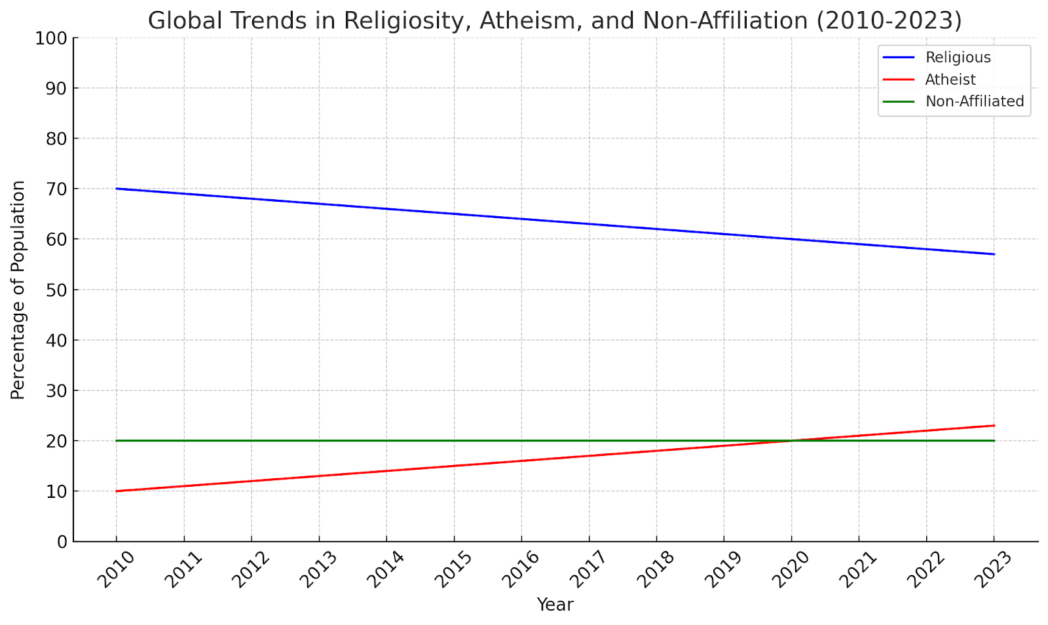
Here is the graph illustrating the global trends in religiosity, atheism, and non-affiliation from 2010 to 2023:
- The blue line represents the percentage of the population identifying as Religious. It shows a gradual decline over the years;
- The red line represents those identifying as Atheist. This line indicates a steady increase;
- The green line represents the Non-Affiliated group, which remains relatively constant throughout the period.
This visualization provides a clear overview of how these different belief orientations have shifted over time, reflecting changing societal attitudes and cultural dynamics.
Conclusion
In 2023, religiosity and atheism coexist in a complex, often overlapping spectrum. This landscape is a testament to humanity's enduring quest for understanding and meaning in an ever-changing world.


